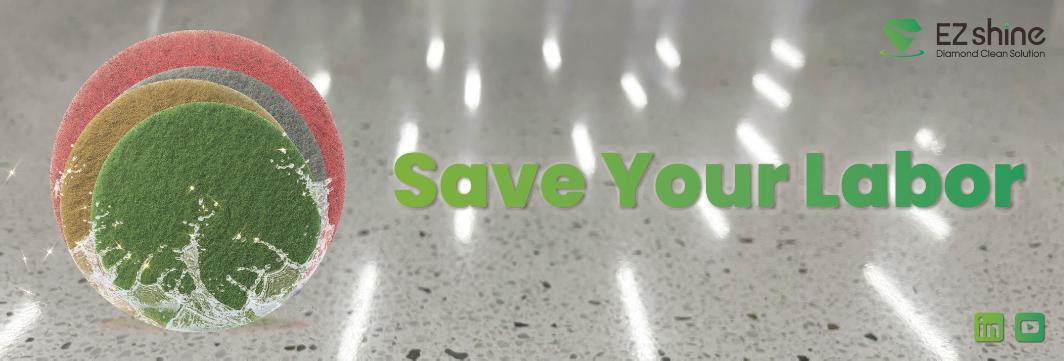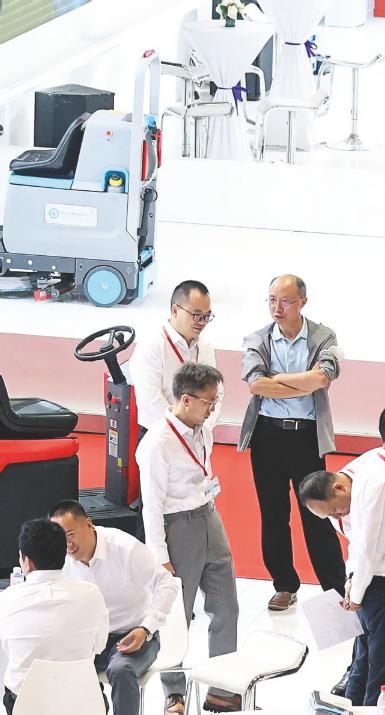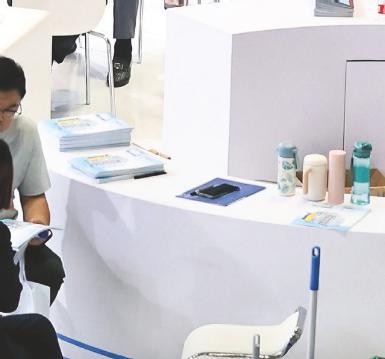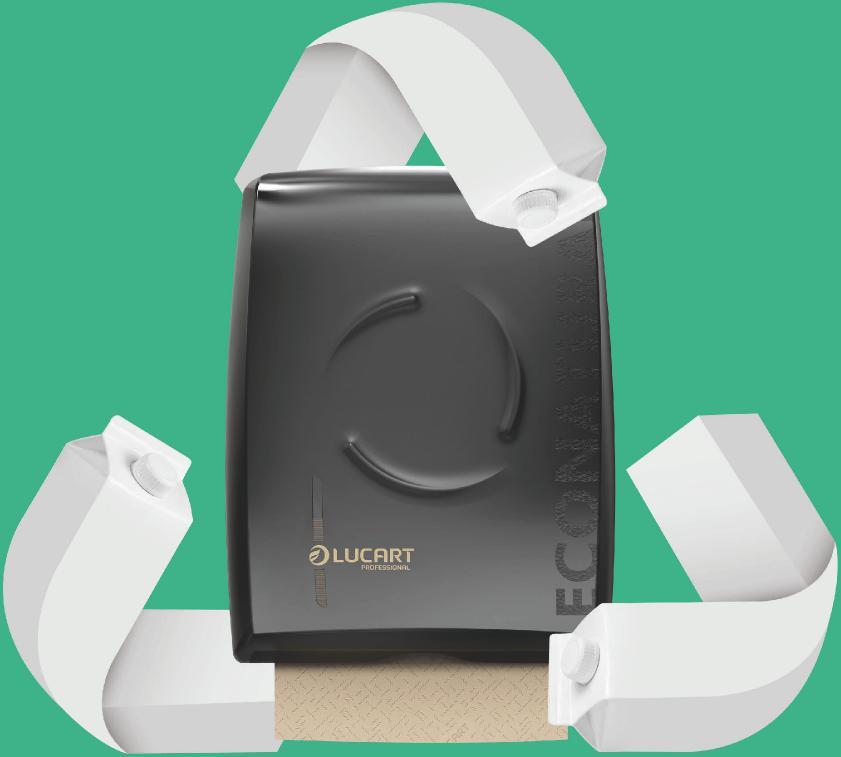










to
Hartley Milner on the world’s first major Acto regulate artificial intelligence.

Read about the winners and see the photos from the Lisbon gala dinner.

Hybrid working
European reports
18 Tough decisions
What do building owners prioritise when selecting hard floors?
Going the natural route
What are the pros and cons of using ‘natural’ materials in cleaning products?
What is the chief function of an air freshening system in a public setting? 36 Why fragrance?

Criterion Publishing Ltd
Castle House, 89 High Street
Berkhamsted HP4 2DF, UK
T +44 (0)1494 791222
F +44 (0)1494 792223
info@europeancleaningjournal.com www. europeancleaningjournal.com
Subscriptions
UK - £60 / Continental Europe - £70 /
International - £80
Editor Michelle Marshall
Features Writer Ann Laffeaty
Advertisement director
Chris Godman
Advertisement sales executive
Laura Bell
Circulation Marie Payne
Italy, Spain & Switzerland
Fabio Potesta
Mediapoint & Communications
Corte Lambruschini, Corso Buenos Aires, 8 V0 Piano, Interno 7 16129 Genova, Italy
T +39 010 570 4948
F +39 010 553 0088
info@mediapointsrl.it www. mediapointsrl.it
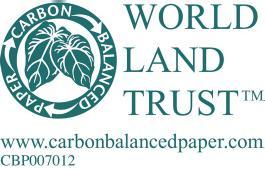

According to the inaugural 2024 Tork Insight Survey by Essity, many individuals are not comfortable using a public washroom and that negatively impacts their wellbeing. It keeps them from participating in social activities - including enjoying food and drink in public - staying at a job and generally feeling safe.
Barriers to being comfortable in public washrooms challenge people every day; some barriers are visible, others are not. Washroom users can be challenged by a wide range of factors including the inability to access soap and hand towel dispensers, loud noises, lack of privacy or cleanliness. Key findings include:
• When people are unable to wash their hands, they don’t feel safe - 73 per cent of respondents feel unsafe if they can’t wash their hands
• Poor washroom experience impacts business - 73 per cent say a bad washroom experience in a restaurant will impact their willingness to return. And 38 per cent of people avoid eating or drinking to limit their use of public washrooms
Left a job
• Poor washrooms are a reason people leave their jobsone in six respondents (17 per cent) said they left a job because of a poor washroom
• Respondents consider access to public washrooms when planning social events or travel - 26 per cent of respondents avoided a social event because of concerns about access to public washrooms. And 44 per cent plan their travel route to ensure access to washroom.
“Comfortable access to public washrooms isn’t just about convenience, it’s a public health need,” said Jenny Logenius, global brand manager, Essity. “Washrooms are the busiest room in a facility
and our research reaffirms that washrooms often aren’t equipped to accommodate the constantly changing capabilities of the population at large.
“This influences an individual’s ability to participate in social gatherings and work, their inclination to buy food or drink or dine at a restaurant and even what routes they choose to travel. Alongside experts and stakeholders, we aim to explore and solve the ways that hygiene in washrooms can be more comfortable for the majority of users.”
Inclusive hygiene
So Tork has made a global commitment to advancing inclusive hygiene in public washrooms by exploring how they can be made more comfortable for both users and cleaning staff, regardless of health conditions, abilities, neuro-diversities, general hygiene concerns or stage of life.
The company first announced its plan during the Reuters Responsible Business USA 2024 event in New York City. Then the company hosted an inclusive hygiene-focused roundtable in Washington with the Global Handwashing Partnership over the summer. By convening experts and facilitating discussion, the event aimed to elevate the conversation around inclusive hygiene in public washrooms and identify areas for change.
Experts and leading voices representing public and private organisations met to review the new data, share expertise and work toward a greater understanding of the issues.
For more information visit: tork.co.uk/inclusivehygiene
Don’t miss the special report on sustainabilitystarts page 25
D’après le sondage Tork 2024 des perceptions par Essity, il existe un nombre important de gens qui sont mal à l’aise quand ils utilisent des toilettes publiques.
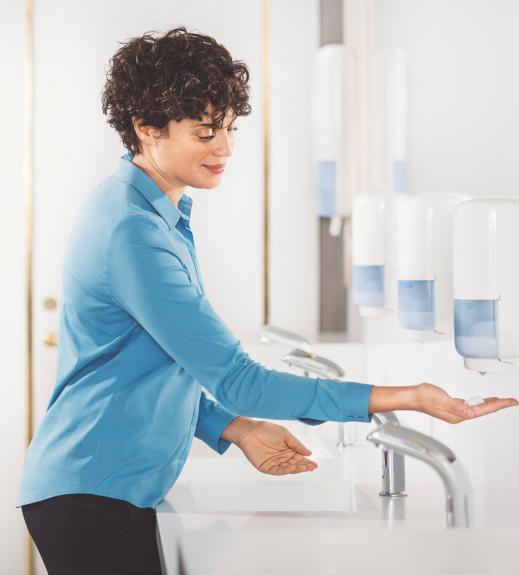
November 18-21
ISSA North America Las Vegas, USA www.issa.com
December 11-13
Interclean China Shanghai, China www.intercleanshow.com/china
March 18-20 2025
The Cleaning Show London, UK cleaningshow.co.uk
March 25-27 2025
Europropre Paris, France www.europropre.com
March 31-April 3 2025 China Clean Expo Shanghai, China www.chinacleanexpo.com
May 27-29 2025
ISSA Pulire Milan, Italy www.issapulire.com
September 23-26 2025
CMS Berlin Berlin, Germany www.cms-berlin.de
October 29-30 2025
ISSA Cleaning & Hygiene Expo Sydney, Australia www.issa.com
November 10-13 2025
ISSA North America Chicago, USA www.issa.com
April 14-17 2026
Interclean Amsterdam Amsterdam, Netherlands www.intercleanshow.com
October 19-22 2026
ISSA North America Las Vegas, USA www.issa.com
November 8-11 2027
ISSA North America Las Vegas, USA www.issa.com
To have your event included in the Events section, contact ECJ via email at: michelle@europeancleaningjournal.com
Tork Insight Survey 2024 von Essity fühlen sich viele Menschen nicht wohl in einem öffentlichen Waschraum.
Secondo il Tork Insight Survey inaugurale del 2024 condotto da Essity, sono molte le persone che non si sentono a proprio agio nell’usare un bagno pubblico.
Professional cleaning solutions manufacturer Greenspeed, which is based in the Netherlands, has achieved B Corp certification - B Lab is the non-profit organisation behind the movement.
To make the grade a company must achieve a benchmark score of at least 80 (out of 200) points and simultaneously demonstrate that they adopt socially and environmentally responsible practices in energy supply, waste and water usage, employee compensation, diversity, and company transparency.
Greenspeed scored 82.5 points and aims to increase this to 90. Every three years, B Corps must recertify to maintain their status.
Greenspeed is now part of a global community of 8,750 companies certified as B Corps. The B Corp community in the Benelux, representing a wide range of industries and sizes, consists of more than 400 companies.
www.greenspeed.eu
To find out more about becoming B Corp certified visit: bcorporation.eu
• Greenspeed, le fabricant néerlandais de liquides de nettoyage professionnel, a reçu la certification B Corp.
• La Worshipful Company of Environmental Cleaners (WCEC), association britannique de nettoyage environnemental, a récemment tenu ses Military Awards annuels, lesquels couronnent la prestation de soins de santé au sein de forces armées.
The Worshipful Company of Environmental Cleaners (WCEC) in the UK recently presented annual Military Awards. The awards celebrate environmental health provision in the military. This year’s winners:
• Post Graduate Medical Officer
General Practice Award - Captain Daniel Snelson
• Army Senior NonCommissioned Environmental Health Technician Award Officer
Staff Sergeant Hall
• Army Junior NonCommissioned Environmental
Health Technician Award Officer
Staff Sergeant Shaw
• Royal Air Force
• In den Niederlanden hat der professionelle Hersteller von Reinigungslösungen Greenspeed die B Corp Zertifizierung erhalten.
• Im Vereinigten Königreich hat die Worshipful Company of Environmental Cleaners vor kurzem ihre jährlichen Military Awards veranstaltet, bei denen die umweltmedizinische Versorgung des Militärs gefeiert wird.
Environmental Health Technician Award - Warrant Officer Tillett
• Reserve Forces Award for Excellence in the Field of Environmental Health - Captain Netherton
• Best Army Cadet - Cadet Oloyede-Aliyu
• Best Sea Cadet - Cadet Ellis Chamberlaine
• Best Royal Marine CadetMarine Cadet Max Owe
• Best Air Training Corps Cadet
- Cadet Alexandru Corcodel
Lorraine Larman, master of the WCEC said: “The WCEC is very proud to continue a robust relationship with the cadet corps and environmental staff.”
• Il produttore di soluzioni di pulizia professionale Greenspeed nei Paesi Bassi ha ottenuto la certificazione B Corp.
• La Worshipful Company of Environmental Cleaners nel Regno Unito ha recentemente ospitato i suoi premi annuali Military Awards, per rendere omaggio a chi assicura la sanità ambientale nelle forze armate.
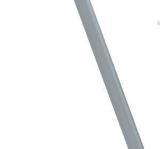
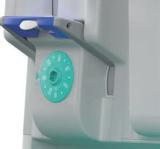










































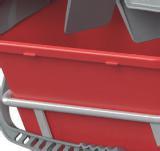
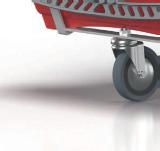





Interclean Shanghai will take from December 11-13 at the Shanghai New International Expo Centre (SNIEC). This professional cleaning event from the organisers of Interclean Amsterdam promises an enhanced international programme. There will be a series of seminars and expertled discussions designed to offer strategic insights into global trends and innovations.
Attendees can engage with global thought leaders over three days, covering topics such as data-driven cleaning, AI, automation and sustainability.
On December 13, a seminar will focus on the evolving standards in infection prevention and hygiene within the healthcare
sector, specifically addressing elder care and medical rehabilitation facilities.
The International Exchange Meeting for Buyers, meanwhile, offers a platform for global buyers to connect with Chinese exhibitors. Participants will have the opportunity to explore innovative, high-quality and cost-effective solutions tailored to the global cleaning market. Healthcare Cleaning Forum
The 14th Hospital Support Service & Management Forum, ‘Comparing and Learning Between China and the Netherlands’, will be held on December 14. Experts will discuss innovations in smart, clean, green, and safe hospitals and how advancements in
Interclean Shanghai aura lieu du 11 au 13 décembre. Ce salon sera accompagné d’un programme international de séminaires et de forums.
productivity can enhance infrastructure and management in China’s healthcare sector.
Case study tour
On December 12, international attendees have the opportunity to visit Wheelock Square and Bicester Village - two of Shanghai’s main commercial hubs. The tour will provide insight into the deployment of cleaning solutions in high-traffic environments. To join the tour, email: interclean@rai.nl
Trade Mission
This five-day organised tour provides participants the opportunity to explore the Interclean Shanghai exhibition, visit key sites in Shanghai and network with industry
Die Interclean Shanghai findet vom 11. bis 13. Dezember – neben der Ausstellung wird es ein internationales Programm von Seminaren und Foren geben.

professionals. The journey begins with an arrival in Shanghai on December 9, followed by a briefing and visits to landmarks such as Yu Garden and the Shanghai Museum.
Attendees will then participate in the opening ceremony of Interclean Shanghai, a guided exhibition tour, and a special international exchange meeting for overseas buyers. The programme also features expert sessions and a case study tour, along with a dinner cruise along the Bund. The mission concludes with further meetings and time on the show floor. If you’re interested in joining the tour, email interclean@rai.nl
For details on the show visit: www.intercleanshow.com/china
Interclean Shanghai si svolgerà dall’11 al 13 dicembre – oltre alla fiera ci sarà un programma internazionale di seminari e forum.


The winners of the European Cleaning & Hygiene Awards 2024 - organised by European Cleaning Journal - were crowned during a night of celebration in Lisbon in early October.
Eleven outstanding businesses and individuals took home a coveted award in recognition of their dedicated contributions to the professional cleaning sector over the past 12 months.
Cleaning and hygiene industry professionals from across Europe’s gathered at Sud Lisboa to celebrate the very best of the industry, including all 53 finalists across the 11 categories.
The 2024 winners are:
• Best Use of Smart Solutions by a Service Provider - JPC by Samsic
• Investment in TrainingCleanEvent
• Start-Up Business of the Year - Cliezen
• Excellence in ClientContractor PartnershipsDerrycourt Cleaning Specialists at the National Rehabilitation University Hospital
• Sustainability - Best Practice (Manufacturing) - Satino, a WEPA Professional brand
• Sustainability - Best Practice (Service Provider) - Principle Cleaning Services
• Commitment to Diversity in the Workforce - Breedweer Facilitaire Diensten
• Best Initiative Raising the Profile of the Cleaning SectorMarkas
• Technological Innovation of the Year - Nexaro for the NR1500
• Leader of the Year - Diane van Dijk, CSU
• Rising Star of the Year -
Kelsey Hargreaves, The
British Institute of Cleaning Science (BICSc)
ECJ editor and founder of the awards Michelle Marshall said: “Every year we think the standard of entries just can’t get any better, and every year we are blown away by the quality and innovation taking place in our industry. It is truly inspiring to read all the entries and see just how much work goes into raising standards in the professional cleaning sector.
“Be proud”
“It was fantastic to bring everyone together in a beautiful location in Lisbon last night to celebrate those making a real difference. Every single finalist should feel incredibly proud of their achievements, but of course we had to select just 11 winners. A huge congratulations to those who took home a trophy. We hope you enjoyed celebrating with us in Portugal.”
Judges include Michelle Marshall, Lynn Webster and Frank Veneman. A special tribute was made to former judge, Juan Diez de los Rios, who passed away this summer.
Lucart Professional was headline sponsor for the event and has also confirmed its support for the next two years. Other sponsors included BICSc; Ceris Burns International; Greenspeed; Interclean; Jangro; Kärcher; Vectair Systems; CMS Berlin; Diversey, a Solenis company; Tork, an Essity brand; and Vermop.
Media partners are GSA in Italy and Services in France.
The European Cleaning & Hygiene Awards 2025 will open for entries in January.
The host city for the 2025 European Cleaning & Hygiene Awards will be announced very soon!
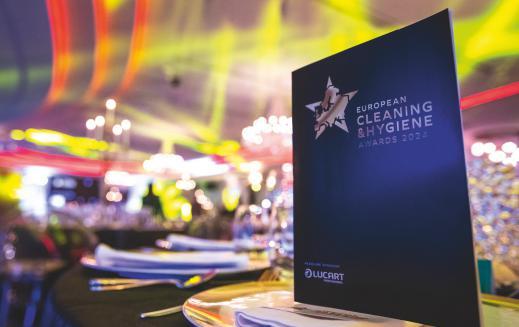

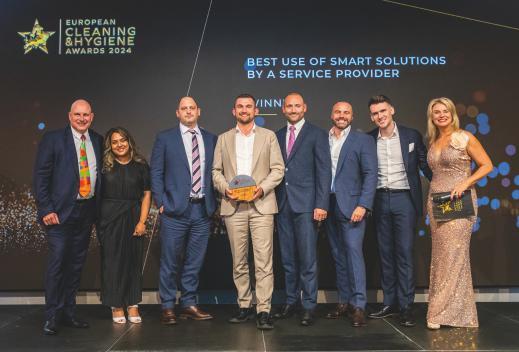
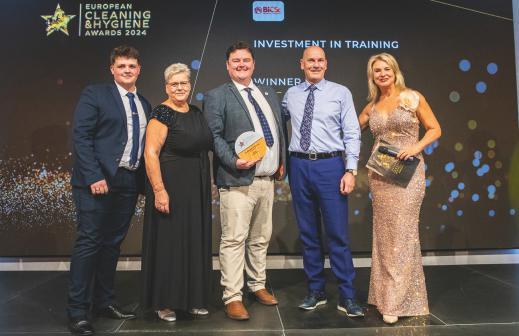
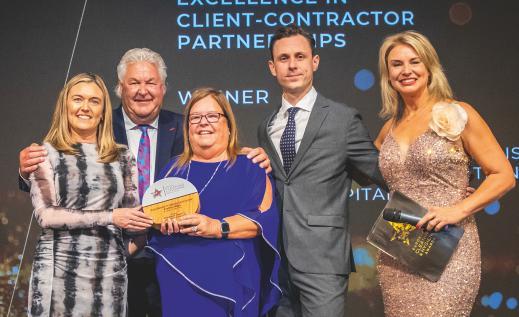
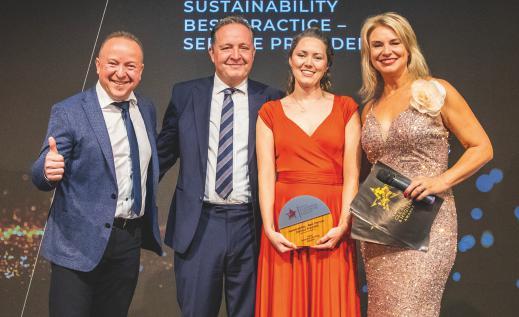


Les gagnants des Prix européens de proprété et d’hygiène 2024 ont été annoncés récemment lors d’une cérémonie à Lisbonne.


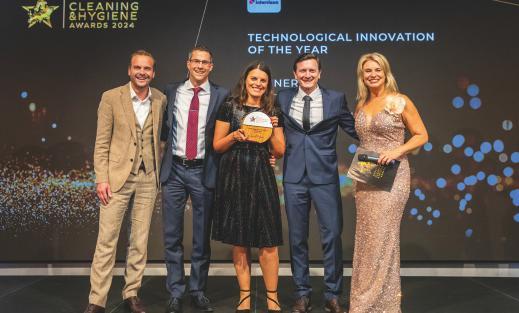

Die
I

Wesley Smith, sales and marketing director at services provider The Clean Space, looks at how commercial cleaning companies are adapting their service offerings to accommodate the new hybrid working model, and how they’re using technology to ensure they can meet their clients’ evolving requirements.
The traditional 9-5 has changed enormously since the pandemic and many organisations are moving towards hybrid working, offering their employees the flexibility of combining remote and office working. The Office for National Statistics in the UK states most people who took up homeworking because of the pandemic plan to both work from home and in the workplace in the future.
And according to Forbes, as of August 2024 30 per cent of people in the UK were working in a hybrid model. So how are companies managing their workspaces efficiently, and what impact is this having on the cleaning industry?
One of the biggest challenges for commercial cleaners in the corporate world is the hybrid working model. To survive and thrive in our industry we must
adapt our service offerings to accommodate a hybrid structure, including fluctuating occupancy levels and all of the associated requirements that go hand in hand with this.
At The Clean Space we offer our clients flexible cleaning schedules that accommodate their hybrid working patterns. This includes adjusting the frequency or timing of cleaning visits based on when employees are in the office. We’ve also developed customised cleaning plans that focus on high-traffic areas and shared spaces, especially on days when more employees are expected in the office.
We maintain open communication with office managers and on-site teams to co-ordinate cleaning schedules effectively and most importantly we remain adaptable to changes in office occupancy and hybrid work arrangements, adjusting our services as needed.
With employees working on different days or different times, keeping premises thoroughly clean and safe is critical for our clients to help reduce sickness and boost the productivity and wellbeing of their employees.
A data led approach
By embracing technology
Wesley Smith, directeur des ventes et du marketing chez le fournisseur de services The Clean Space, examine comment les entreprises de nettoyage commercial adaptent leurs offres de services pour s’adapter au nouveau modèle de travail hybride, et comment ils utilisent la technologie pour s’assurer qu’ils peuvent répondre aux exigences changeantes de leurs clients.
and a data led approach to cleaning, commercial cleaners can use technology to help with the demands of ‘hybrid cleaning patterns’, to make more informed decisions about scheduling, monitoring cleaning tasks and communicating updates with clients and cleaning operatives.
Technology platforms can provide valuable insights that help to structure resource models and allow organisations to make operational decisions based on real time data. They can also provide contract performance metrics and reports which are great for providing clients with service transparency.
Our clients expect detailed information about cleaning processes, products used and the frequency of cleaning. This transparency helps to build trust, ensuring they’re confident in the cleanliness and safety of their premises.
Digital infrastructure
To help deliver a comprehensive cleaning solution that accommodates hybrid working patterns we’ve partnered with PEGO, which has allowed us to digitise our contracts and operations. The platform has streamlined our operations allowing us to set customisable cleaning tasks on a dashboard for each contract with real-time task lists delivered to cleaning operatives and full visibility for building managers.
At the beginning of 2024 we trialled the PEGO platform at our client L&Q’s head office in Stratford, London and its Cray House site in Sidcup. Not only did the technology platform deliver a 20 per cent productivity saving for L&Q, it also demonstrated how we could use proof of service to give
Wesley Smith, Vertriebs- und Marketingleiter beim Dienstleister The Clean Space, untersucht, wie und wie gewerbliche Reinigungsunternehmen ihre Serviceangebote an das neue hybride Arbeitsmodell anpassen Sie nutzen Technologie, um sicherzustellen, dass sie den sich ändernden Anforderungen ihrer Kunden gerecht werden können.
our customers added confidence that our contract terms are spot on in terms of resourcing and allocated hours.
As a result of the PEGO trial the on-site team at the head office identified several areas of the building that weren’t being used on certain days - such as boardrooms and closed-off offices - due to hybrid working.
“This meant we could redeploy our cleaning operatives to high traffic areas such as receptions and washrooms,” explained Simeon Preddie who is responsible for the daily management of the contract.
“We also switched some working hours from night to day shifts to ensure L&Q was getting the most efficient service for their specific requirements.”
Not only does data led technology have benefits for our clients, but we’ve also been able to address multiple sources of inefficiency in some of our existing cleaning practices such as wasted management hours assigning tasks to operatives, and manually auditing our service delivery. It’s clear that although initial investments in technology platforms may seem substantial, they often translate into serious long-term cost and efficiency savings.
By focusing on flexibility, communication and adapting services to fit the changing needs of hybrid work environments, commercial cleaners can absolutely support businesses in this new working model. And by embracing technology platforms and a data led approach to cleaning, they can gather operational data that will allow better resourcing for contracts, thus reducing costs in the long term and delivering a model that will help to assist clients with a hybrid working structure.
Wesley Smith, direttore vendite e marketing presso il fornitore di servizi The Clean Space, esamina come le aziende di pulizia commerciale stanno adattando le loro offerte di servizi per adattarsi al nuovo modello di lavoro ibrido e come stanno utilizzando la tecnologia per assicurarsi di poter soddisfare le esigenze in continua evoluzione dei loro clienti.

Numatic Quick is designed and tested for commercial use, bringing all the benefits of powerful, convenient cordless cleaning to professional users. A new high-efficiency Pod system delivers dust-free, hygienic emptying with no dust, no mess, no fuss.

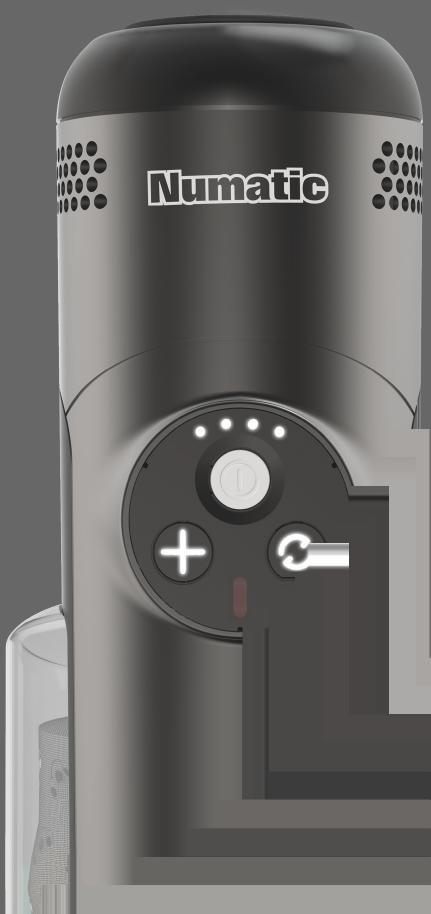
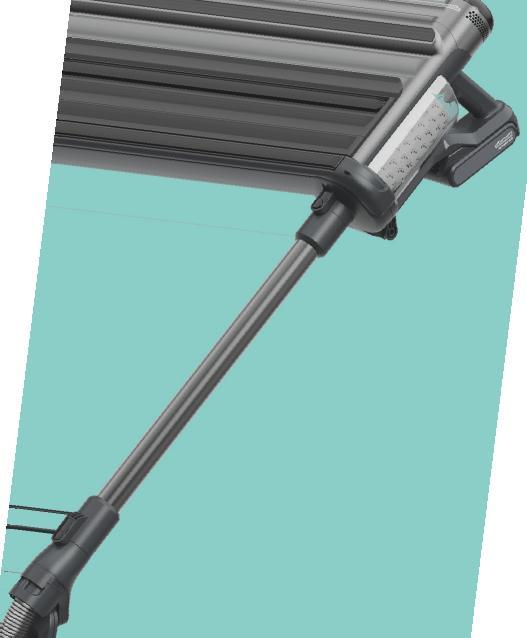

















The Professional Association of Cleaning Companies (ASPEL) in Spain recently published the 2024 edition of its annual report ‘Building- and Premises Cleaning Sector Data’. This highlighted the fact that the cleaning sector accounts for 1.07 per cent of the country’s GDP - confirming it continues to be essential in the value chain of the other sectors in Spain.
Cleaning is also one of the top 10 service sectors in terms of employment: 2.6 per cent of the 19.7 million workers and eight per cent of the 6.8 million salaried service employees in Spain.
Lobbying continues
Juan Ignacio Beltrán, the newly-appointed ASPEL president, explained: We will continue to be the voice of cleaning and we will continue to call for modifications to the law on Public-Sector Contracts (LCSP) and to the Law of Deindexation. Currently, contracts signed with the Administration cannot have their prices revised when costs increase and which very often flow from decisions made by the Administration itself (increase
• L’association espagnole de la propreté, ASPEL, a publié son rapport 2024 sur l’état du secteur.
• L’emploi de lingettes à additif de couleur pourrait améliorer le rendement du nettoyage en milieu hospitalier, rapporte une étude aux États-Unis.
• Der spanische Vertragsreinigungsverband ASPEL hat seinen Bericht für das Jahr 2024 über den Stand der Branche veröffentlicht.
• Die Verwendung eines Wischtuchs mit einem Farbzusatz könnte die Effizienz und Wirksamkeit der Krankenhausreinigung verbessern, so eine US-Studie.
• L’associazione spagnola delle pulizie conto terzi ASPEL ha pubblicato il suo rapporto 2024 sullo stato del settore.
• Secondo uno studio statunitense, l’uso di una salvietta con un additivo colorato potrebbe migliorare l’efficienza e l’efficacia della pulizia ospedaliera.
in Social Security contributions, increase in the minimum wage, possible reduction of working hours, etc).”
The report explains that the sector “grew in worker numbers in comparison with the previous year” and the number of affiliated workers now stands at 394,231. There were more than 17,750 cleaning companies in 2023, up by 93 on the previous year.
A simple visual cue could improve the efficiency and efficacy of hospital cleaning, according to a study.
US researchers equipped hospital cleaners with wipes containing a colour additive that allowed users to see which surfaces had been sanitised.
They found that when using the wipe with the colour additive, rooms were 69.2 per cent cleaner and could be cleaned
faster than when cleaning with standard wipes.
“Our study is the first to evaluate colour additivesupported hospital cleaning based on microbial burden and the first to measure impact on cleaning times,” said lead author of the study Olayinka Oremade.
“Collectively our results show that providing a simple visual cue makes an enormous difference in room cleanliness.”



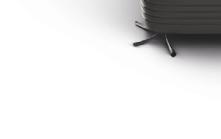


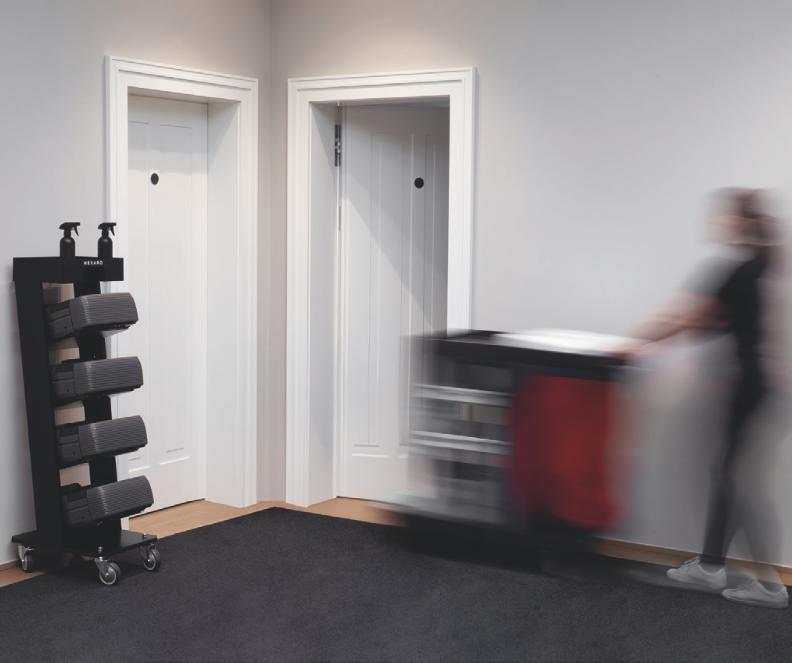

Dutch correspondent John Griep tells us about the relevance of the crooked paths theory to cleaning.
The ‘crooked paths’ theory is a concept that challenges the idea of always taking the straightforward or predictable route. Instead, it suggests that by allowing space for exploration, flexibility and creativity, one can create opportunities for inspiration, growth and development at every turn. This approach is about embracing the unexpected and finding value in the twists and turns along the way, where each bend reveals a new chance to captivate and engage those involved.
The origin of this idea can be traced back to Anton Pieck, Dutch visionary and founder of famous Dutch theme park ‘de Efteling’. Pieck believed in the power of crooked paths to inspire and create wonder. He demonstrated the most enriching experiences often lie beyond the predictable, encouraging others to embrace unconventional routes.
Applying the crooked paths theory in your organisation
While the crooked paths theory has been successfully applied in industries like hospitality and entertainment, there are undeniable parallels with the cleaning industry. The secret to its success lies in inspired employees who are encouraged to transition from mere task-oriented behaviour to a more talent-driven mindset. This transformation allows employees to approach their work with a fresh, positive outlook, which has a ripple effect on customers, clients, and other stakeholders.
The process begins by creating an environment where employees feel empowered to voice their thoughts and ideas. Rather than assigning tasks in a rigid, one-size-fits-all manner, managers can invite clean-
Dans son reportage des Pays-Bas, John Griep explore la manière dont la théorie du «chemin tortueux » peut s’appliquer au commerce de la propreté.
ing employees to share their suggestions on how processes can be improved. This approach not only brings valuable ideas to the forefront but also uncovers developmental opportunities that might otherwise go unnoticed. Furthermore, cleaning professionals often work behind the scenes and their contributions can go unnoticed. However, by encouraging them to take ownership of their roles, offering compliments and by providing them with the space to share their insights, we can foster a sense of pride and purpose.
Power lies in ability to inspire
The crooked paths theory challenges us to move beyond conventional, linear thinking. In the cleaning industry, it means giving employees the freedom to express themselves, share their ideas and contribute to the organisation’s success in a way that aligns with their unique talents and passions. By doing so, organisations can cultivate a workforce that is not only more engaged but also more innovative and capable of delivering exceptional service.
Ultimately, the power of the crooked paths theory lies in its ability to inspire. When employees feel their voices are heard and their contributions are valued, they become more motivated to excel in their roles. This shift from task-driven behaviour to talent-driven engagement is what makes all the differencecreating a dynamic and inspired workforce that is capable of achieving remarkable results.
Special report on sustainability starts on page 25
In seinem Bericht aus den Niederlanden untersucht John Griep, wie die Theorie der „schiefen Pfade“ in einem Reinigungsunternehmen angewandt werden kann.
Anna Garbagna in Italy reports from a recent seminar discussing Transition 5.0.
A series of investments between 2024 and 2025 which would lead to real and documentable energy savings: this is what the new Transition 5.0 is asking for, as highlighted by Marco Belardi, consultant of the Ministry of Economic Development (MISE).
The digital and energy transition represents a central theme cleaning industry association Afidamp has been studying for some time to bring solutions and guide its members to make the best choices.
Belardi led the seminar ‘Transition 5.0: technical aspects, opportunities and problems in light of Legislative Decree 19/2024 of 2 March’, organised in Milan by the FINCO Federation to inform companies about the recent innovations introduced by Legislative Decree 19/2024, relating to the further provisions for the implementation of the National Recovery and Resilience Plan.
Belardi illustrated how companies that decide to invest in goods functional to the circular economy, sustainability and energy saving can access the incentives. Aiming to enhance and facilitate the development of projects in these areas, this operation focuses on three types of costs: investments in new material assets, aimed at the self-production of energy from renewable sources for self-consumption, expenses for staff training and for “4.0” capital goods.
Transition 5.0 does not eliminate Transition 4.0, they are two distinctive regulations which however share some points.
Regarding the deadline for applying for incentives, Belardi stressed that timing is quite tight, since three quarters of this
year has already passed and the deadline for 2025, for compensation, coincides with the deadline for filing tax returns, which is December 31 2025.
Hence the need and urgency to make investments that are correct and, above all, achievable in the short term.
During the seminar, which Afidamp proposed to its members, Belardi wanted to highlight with some concrete examples the feasibility and the procedure to get the incentives.
Compared to Transition 4.0, for instance, access to Transition 5.0 requires a sort of booking. All documents need to be sent to the Evaluation Commission - including the calculation of the expected incentive - so as to immediately get an idea of the total spending and possibly stop further requests if and when the total amount of incentives provided is reached. The expected incentives are €3.1 billions for 2024 and €3.1 billions for 2025 - further updates are under review. That is why the association has invited all members to look out for further news.
In order to take advantage of tax credits for investments in new capital goods and for investments in research and development activities, technological innovation, design and aesthetic creation, companies will be required to communicate in advance and electronically the total amount of investments they intend to make, the presumed distribution of the credit over the years and the relative use. This will help distribute correctly the resources for a unitary and fair development of the sector at a national level.
In un reportage dai Paesi Bassi, John Griep esplora come la teoria dei “percorsi tortuosi” può essere applicata in un’impresa di pulizie.
Rapportant d’Italie, Anna Garbagna se penche sur ladite Transition 5.0, c’està-dire, l’application de procédés de production à un modèle d’utilisation énergétique efficace et durable.
Anna Garbagna berichtet aus Italien über Transition 5.0 –die Umsetzung von Produktionsprozessen zur Erreichung eines effizienten und nachhaltigen Energiemodells.
In Italia, Anna Garbagna sulla Transizione 5.0 – l’implementazione dei processi produttivi verso un modello energetico efficiente e sostenibile.
Lynn Webster in the UK on an event focusing on those who work behind the scenes in hotels.
The hospitality industry has been celebrating International Housekeeping Week; an annual event focusing on the appreciation of housekeepers and room attendants. These roles often remain hidden in a hotel environment yet proffer the biggest impact on revenue and deliver that human touch to the guest experience. Everyone staying will use the bedroom and bathroom but not necessarily the other hotel facilities.
As the introduction of technology and use of AI reduce personal contact, these roles are becoming even more significant. With tech such as virtual assistants, smart room and automated concierge services streamlining operations, the personal touch has never been more appreciated. Housekeeping is not just about the cleanliness but providing special, memorable experiences - through observation and conversation.
According to chairman of UKHA for Yorkshire Lisa Williams: “It’s about making each stay more comfortable and welcoming, regardless of a guest’s background,” she said.
We reflected on how such appreciation is recognised. The thank-you note, a token left on the pillow as thoughtful feedback. The subject of rewards, gratuities and ‘tips’ can be an emotive one as many rely on them to supplement their pay.
While tipping hotel housekeeping is not expected - and their wages don’t include projected tips as with restaurant staffthey work hard and are normally at the bottom of the pay scale for the challenging work they do.
The generally accepted custom in the UK not to tip housekeeping, specifically in hotels. I regularly would tip on holiday but perhaps I am less likely to on
L’industrie internationale de l’hospitalité a salué le précieux travail des personnes qui assurent le service de chambre d’hôtel et leurs supérieurs. Lynn Webster en rend compte.
business trips of only one or two nights’ stay. Most people in this country don’t tip and there is no expectation that you should.
But now the law is changing. In an overhaul of tips and gratuity practices, a new law being introduced this year will make it illegal for employers to withhold tips from workers. It is unlikely the receiving of gratuities will cease but the mechanics, control and administration of the system will add seriously onerous extra time and costs for hospitality businesses.
From October 1 the Employment (Allocation of Tips) Act 2023 requires employers to ensure workers receive the full tip from a customer. This issue was first consulted on in 2016 after media highlighted malpractice and unfair distribution of tips. While cash tips are already protected by law but less commonplace, this new legislation will go further to cover card payments in our increasingly cashless society.
In broad terms, employers must pass on tips to workers without any deductions. While cash tips were always protected this new legislation will ensure the full amount of cashless receipts are also passed on to the staff. No longer will this be used to support business and employers in their cashflow: it will all go to the employees.
There will be a statutory code of practice to demonstrate fairness and transparency. Employers will need to have a written policy on tips and record how they manage them. According to government estimates the new rules will allow more than two million workers to keep a total of £200 million a year in tips. So, it has certainly raised the profile of housekeeping gratuities to the forefront, and not before time.
Das internationale Gastgewerbe feiert die unschätzbare Arbeit von Haushälterinnen und Raumpflegerinnen, schreibt Lynn Webster in Großbritannien.
The cleaning sector in France is facing difficulties due to economic slowdown, says Christian Bouzols.
The attractiveness of jobs in the various sectors has become a major issue for the French cleaning sector in 2024. “We’re faced with some difficulties”, says Patricia Charrier-Izel, director general of contract cleaning association FEP.
One difficulty is the fact that the higher-than-average age of cleaning workers is discouraging some young people who might be interested in becoming professional cleaners. All eight cleaning training centres in the country have vacancies. Another difficulty is linked to a non-recognition of the fact that cleaning work can be technically demanding, for example in the health and nuclear sectors.
One way in which the FEP tried to make cleaning jobs more attractive was to launch a campaign on Instagram and TikTok. This was in response to the high level of demand from cleaning companies, six out of 10 of which were considering hiring more people in early 2023 - according to a Xerfi Specific survey for Monde de la Propreté.
“We’re among the business sectors that recruit the most,” says Charrier-Izel. Currently, cleaning gives work to 600,000 people in France - 115,000 more than 10 years ago. In 2022 the number of cleaners rose by 1.2 per cent, but the increases had been three per cent a year before the pandemic.
However, these fairly positive figures shouldn’t hide the fact the cleaning sector, whose profit margins are small, has suffered from the current economic slowdown. In 2002, the sector’s turnover registered a 2.7 per cent increase to €17.8 billion - that increase was one of the lowest during a 10-year period. This was partly due to many cleaning company failures, mainly among very small firms,
explains Philippe Jouanny, vicepresident of the FEP.
“Due to this economic contraction, several corporate clients have reduced their cleaning contracts,” adds Patricia Charrier-Izel. Office cleaning, which represents 36 per cent of turnover, has been hit hard, particularly in large urban areas. Jouanny explained: “Companies have reduced their office areas and many are closed on Fridays, so there is no longer work for our cleaners on that day. So we fear the advent of a four-day working week.”
Regarding the cleaning of buildings (30 per cent), building managers are reluctant to agree to increased cleaning costs and, when they do, they pass them on to occupants by inflating energy charges. Furthermore, buyers from the public sector (25 per cent) have been told to make savings.
Another difficulty stems from the fact some factories are now closing their establishments two days a week to save on energy costs, also reducing their need for cleaning. Even specialist contractors, such as those who clean up after the completion of building works, have been hit by a standstill in development.
It’s true that in some areas, such as old people’s homes, demand has increased, but generally the current economic downturn has hurt a sector whose profit margins have always been small (three per cent before the pandemic) and have gone down further. Its costs, which are essentially labour costs, have risen faster than turnover. According to the Xerfi survey, seven out of 10 cleaning companies have not managed to pass on more than 10 per cent of those increases to customers. The question is, how long can they carry on like this?
Il settore dell’ospitalità internazionale celebra il prezioso lavoro delle donne delle pulizie e degli addetti alle camere, scrive Lynn Webster nel Regno Unito.
Christian Bouzols berichtet in seinem Bericht über die Auswirkungen der schlechten Wirtschaftslage auf die Reinigungsbranche in Frankreich.
stia danneggiando il settore delle pulizie.
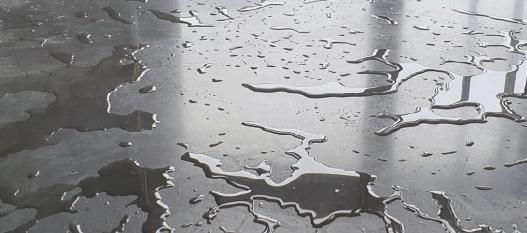


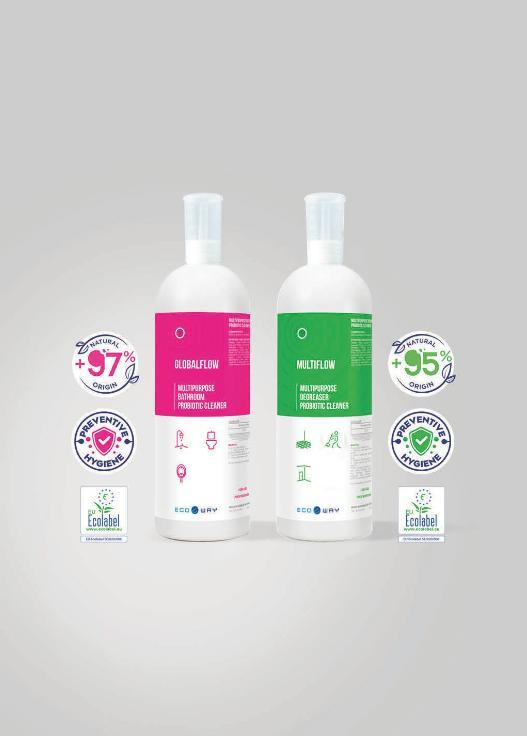
Katja Scholz, ECJ’s reporter in Germany, on her observations of the country’s public toilets.
I will never forget the moment when, during my first holiday in Norway many years ago, I went into the public toilets in a shopping centre in Oslo. There was corner seating with a large couch at the entrance, there were numerous USB charging sockets for mobile phones and tablets, there was a pleasant smell and I didn’t feel the urge to turn round and walk straight out again because - it was clean! I was so impressed – and after many visits in subsequent years I came to realise that, while not necessarily true overall, this is more the rule than the exception in Norway and the other Scandinavian countries.
In my home country, regrettably the reverse is the case. As a rule, public toilets are places that I would rather not enternot everywhere, but very often. Why is that? I often try to find an answer to this question. I have travelled in many European countries and time and again make comparisons, particularly when, like last week, I made a stop at a German service station. There’s one thing I’m sure of: it’s not the fault of the cleaning staff! - despite manpower shortages in the sector. I am convinced that it’s users themselves who are the problem - how they behave, how they leave these places and how they treat other people’s property. Not everyone, but with a population just short of 85 million in Germany, it’s enough if only a small percentage cannot or will not behave decently. This results in the conditions that we find ourselves with.
The work of cleaners responsible for public sanitary facilities is demanding and often particularly unpleasant. And what is even more annoying: no matter how good their work is, it only takes two or three people to ruin
Katja Scholz, notre correspondante en Allemagne, contemple un domaine de travail délicat pour les agents de nettoyage : les toilettes collectives.
it. Frequency of cleaning cannot compensate for the behaviour of the users.
And yet the demands of people using public facilities are actually quite high, according to a study by Metsä Tissue. The three most important items for the users of public toilets are: paper towels, soap and hand sanitiser. The most important aspect when it comes to using public washrooms is the cleanliness of the facility – according to 63 per cent of those questioned in Germany. Even more - almost 90 per cent - like no-touch soap and paper towel dispensers.
Looking at the various locations for public toilets, the study found almost 80 per cent of respondents thought better of a restaurant if the toilet was clean and well-maintained, while in a shopping centre it was just under 70 per cent. So people expect washrooms to be clean and this gives them a better impression of the facilities - and yet the people responsible for those conditions are rarely the operator of these facilities but the users - we ourselves. So is it ‘only’ the remaining 20 or 30 per cent who don’t gain a better general impression of the place or could it be that the respondents to the questionnaire, for whom cleanliness is so important, are also responsible for not leaving the facilities in the desired condition?
On the whole, I find the study informative but a little too sweeping for my liking. What is not in question is my own personal impression and my own experience. There are exceptions but why are they not the rule? Why can’t we make life easier for the cleaners who have such a hard job every day, and at the same time make the visit to a public toilet a little bit more pleasant for ourselves?
Katja Scholz in Deutschland betrachtet einen der anspruchsvollsten Bereiche für Reinigungskräfte –öffentliche Waschräume.
Katja Scholz in Germania esamina più da vicino uno dei settori più impegnativi per il personale addetto alle pulizie: i bagni pubblici.
New campaign launched to encourage passengers to show respect for cleaning staff in the Copenhagen
This summer Coor, a leading FM provider in the Nordic countries, released its third ‘Join the Workplace Revolution’ report. This time exploring technology trends in buildings and facility management. Based on a March 2024 survey among 402 respondents classed as decision makers, Coor concluded emerging technologies are believed to have a high impact on the workplace and that companies show willingness to embrace technologies that can ensure company safety and security, increase efficiency, manage new data sets and drive down costs.
This goes for the FM industry as well. In fact, this industry has never changed as rapidly as it is now - CEO of Coor, AnnaCarin Grandin, writes in her opening remarks of the report.
An increasing number of Nordic companies use AI and apps for instance, more than half of the respondents are planning to implement such solutions or sensors, drones or even virtual reality within the next three years, and 17 per cent said they’ll invest in data-driven cleaningneeds-based cleaning or cleaning on demand - in the course of 2024-2025. On the face of it, the number may seem low, but less so if we take into consideration some companies have already invested in those technologies.
Others are, naturally, more hesitant as it can be a challenge for organisations to understand where investment will serve them best, as it says in the report. However, adopting new tools and technologies will be crucial for their future success or even survival in the industry.
Speaking to the official magazine for this year’s autumn fair of the Danish cleaning industry (Rent
Dans les pays Nordiques, les postes de travaillent dépendront davantage de la technologie pour donner de bons rendements et les organisations paraissent prêtes à s’y adapter, rapporte Lotte Printz.
i Danmark) tech expert David
Guldager, one of the keynote speakers, predicts that in 20 years the entire cleaning process will be automated. Guldager stresses, though, there’ll be no need to fear this development as there’ll still be a need for the human ‘touch’.
“It would be naïve to think we can keep on having physically demanding jobs. We have to live longer and healthier. People should not have to lift heavy objects or do other physically strenuous tasks,” he said.
Besides, someone must operate the robot and make sure the job is done properly. Robots cannot just go and get work started, as Guldager puts it.
Training plays a key part, but cleaning professionals do not need a degree in engineering to become tech-savvy for the cleaning industry, Guldager explains. These days robots are operated via apps and are thus easy to handle.
That’s the good news. The bad news, according to the tech expert, is that any cleaning companies or operatives insisting that digitalisation is not ‘their thing’ will be bowled over!
For companies within the industry that might be reluctant, time registration for employees - which became statutory in Denmark as of July 1 this year to comply with the EU Working Time Directivemay have come as a blessing in disguise. To a fairly large extent, cleaning staff are already using apps and NFC tags or QR codes to register their presence and time spent with the customers and it’s only a small step further to register their working hours. And once that has been implemented, the next steps towards integrating more technologies and digital cleaning may seem less uphill.
Der künftige nordische Arbeitsplatz wird stärker auf Technologie angewiesen sein, um erfolgreich zu sein, und Unternehmen scheinen anpassungsbereit zu sein, schreibt Lotte Printz.
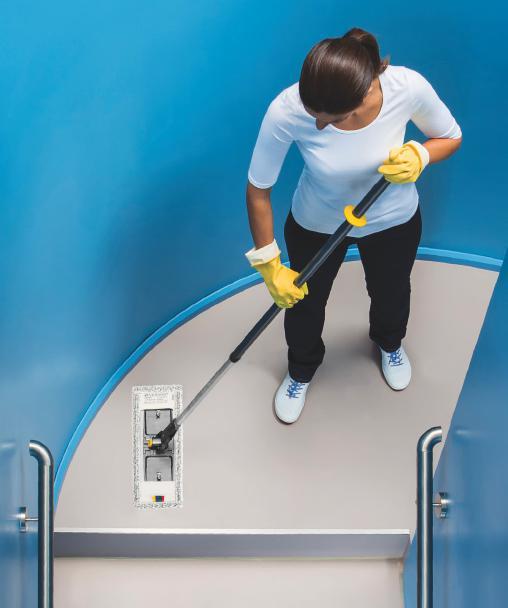
Il successo del futuro ambiente di lavoro nordico dipenderà maggiormente dalla tecnologia e le organizzazioni sembrano disposte ad adattarsi, scrive Lotte Printz.












What do people want most from their hard floor? Are they seeking a practical, sustainable and lowcost solution, or do they want a high shine for aesthetic reasons?
Ann Laffeaty asks companies whether floor choice is a tough decision for the customer – or whether it is a no-brainer.
CHOOSING A FLOOR can be a difficult decision. Businesses first need to consider the impression they wish to make on their customers and on visitors in general.
Do they want to provide a comfortable, home-from-home ambiance, for example? Or do they prefer to create a more business-like appearance? Will an attractive floor keep its aesthetically-pleasing appearance in a high-traffic environment? Or will it quickly become soiled, scratched and damaged due to the number of visitors trampling upon it?
Many people choose a hard floor because they think it will be easier to clean than a carpet, according to Truvox national sales manager Paul Robinson. “However in our experience, it can be just as difficult to clean a hard floor,” he said. “It really depends on the environment, however. In the healthcare sector hard floors might be the most appropriate solution because any spillages can be easily removed, whereas a carpet might be more appropriate in a care home.”
He claims specifiers and architects often put aesthetics ahead of considerations such as hygiene and cleaning when it comes to installing a floor. And they rarely consider factors such as the cleaning method and frequency, he adds. “It is therefore a good idea to choose the right type of multipurpose scrubber-dryer to maintain all types of flooring,” he said.
Most people assume they will be able to keep a hard floor clean with a mop alone, according to Robinson. “However,
this method doesn’t really clean - it just takes the dirt for a walk and moves it from one place to another,” he claims. “And it also spreads bacteria and viruses around the floor and leads to a build-up of soil, particularly at the edges of a room.”
He says some hard floors are easily damaged and are expensive and timeconsuming to repair in comparison with carpets. “However, hard flooring can be more hygienic than carpets in some environments such as healthcare because the spillages are easier to remove. It’s a balance between aesthetics and practicality.”
Truvox has noted a major shift away from high-gloss flooring over recent years - particularly in the healthcare and care sectors. “This is because there is a perception that the floor may be wet or slippery in these environments,” adds Robinson. “The time and cost involved in maintaining a high-gloss floor can also be prohibitive and most people now seem to prefer a mid-sheen finish.”
Customers often choose hard floors because they combine aesthetics with practicality, according to Filmop business development manager Paolo Scapinello. “A smooth, non-porous surface will immediately give the impression of hygiene because dirt cannot be lodged within it and is easy to remove from the surface.
“However, it is always a good idea to consider the intended use of the floor and the stresses to which it will be subjected. These factors should be considered alongside aesthetics.”
Hard floors are generally believed to be easier and faster to clean than textiles, according to Scapinello. “Coverings such as carpets, rugs and runners require more effort than smooth surfaces and high traffic can compromise textile floors by wearing them out,” he said. “And customers keen to create an elegant, refined and timeless environment may well prefer the high-gloss finish of a hard floor.”
These types of flooring also offer greater resistance to stress even when subjected to heavy traffic, he claims.
“However, frequent cleaning with the appropriate equipment will maximise the durability of the floor and preserve its value over time,” he adds. “And to achieve a high level of hygiene, it is essential to rely on the appropriate cleaning equipment.”
He claims microfibres are the best method of cleaning hard floors because they have a high collection capacity which enables them to effectively remove viruses and bacteria while ensuring high hygienic standards.
The fact hard floors are durable and can withstand more foot traffic than carpeted floors means they are ideal for commercial premises, says Cleanology CEO Dominic Ponniah. “Hard floors are also easier to clean and maintain and stains and spillages are easier to remove from them. Many businesses now give more thought to their environmental impact when choosing their flooring too, and this means materials such as reclaimed wood and bamboo are becoming increasingly popular. And wood is also renowned for creating a warm and natural appearance.”
Hard floors can last for decades if they are well maintained, Ponniah adds. “With carpets, on the other hand, it is not uncommon to have to replace them every five to 10 years.”
The perception of hygiene is another driving factor that convinces many businesses to opt for hard floors he says. “This is particularly the case in the hospitality and healthcare sectors. A high-gloss finish is also favoured by businesses seeking a sleek and more modern look. These types of floors can give the impression of being cleaner, although the customer needs to be aware that dust and scratches are also more likely to show on them.”
However, Ponniah adds it is a myth that hard floors need little or no maintenance. “They may not need the deep cleaning that carpets require, but materials such as wood will need refinishing or sealing to safeguard their appearance and longevity,” he said. “We always recommend hard
89% of customers likely switch providers after a negative experience.*
If your floor care fleet runs cheap gel batteries, you risk fleet-crippling battery failure along with your reputation. Why gamble?
the life of gel batteries – making them the wise choice for floor care.


Tough decisions (continued from page 18)
floors be machine-cleaned quarterly: mopping is only a daily solution.”
According to Ponniah, the right floorcare system will play an important part in preserving a hard floor and this might incorporate pH neutral cleaners, protective sealants and microfibre mops. “The manufacturer’s maintenance guidelines and product recommendations should always be followed when cleaning hard flooring.”
Customers often choose a hard floor both for aesthetic reasons and because they feel it will be a practical solution for their facility, says Kärcher trainer Sebastian Nann. “Where there is frequent adherent soiling by substances such as drink stains and food residue or where disinfection is required, a textile floor makes no sense,” he said.
“Aesthetically there are many design options available for both hard floors and textile floor coverings. However, foot warmth and acoustic aspects often play
Qu’attendent les gens de leurs planchers durs? Veulent-ils qu’ils brillent pour des raisons esthétiques, ou se soucient-il d’avoir une surface hygiénique facile à nettoyer ? Où recherchent-ils plutôt un revêtement qui soit pratique, durable, moderne, ou peu onéreux?
a role in the customer’s decision when installing a specific type of flooring. And in public spaces such as reception areas or shops, a clean impression is crucial.”
He says the use of hard floors is recommended in areas likely to encounter a high footfall or adhesive soiling. And he adds hard floors are also more practical in environments where disinfection is required such as in a hospital, and in areas with high humidity levels such as around swimming pools.
“In most cases a hard floor is easier to clean than a carpet,” he says. “However in terms of maintenance, a parquet floor for example will be much more expensive than textile flooring. The durability of the floor will depend heavily on the quality, cleaning frequency and frequency of use - textile coverings such as needle felt can last up to 20 years, for example.”
He believes some customers might choose a hard floor because they perceive
Was wollen die Menschen am meisten von ihrem Hartboden? Ist es ein hoher Glanz aus ästhetischen Gründen oder eine hygienische Oberfläche, die relativ leicht zu reinigen ist? Oder suchen sie stattdessen einen Bodenbelag, der praktisch, nachhaltig, im Trend oder einfach billig ist?
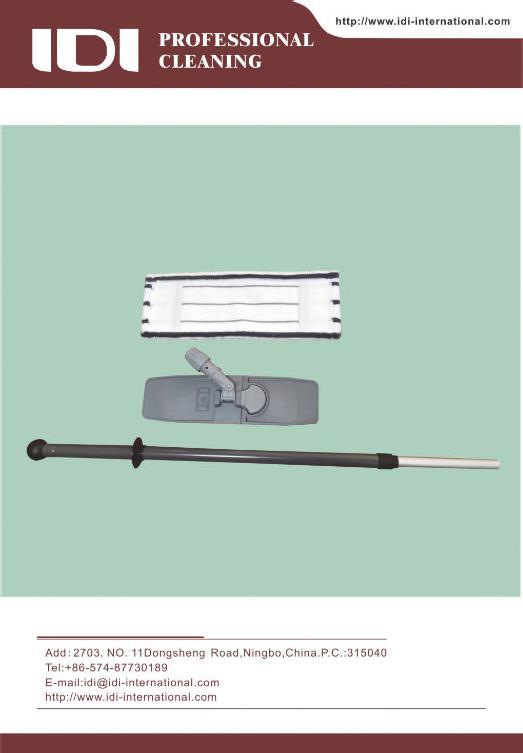
them to be more hygienic. “There are also many reservations about textile floor coverings because of the possible presence of mites, for example,” he said. “What you can say for sure is you can disinfect most hard floors and they will be more hygienic.”
According to Nann, other factors that play an important role in the customer’s floor choice will include slip resistance, current fashion trends and life cycle costs.
“Hard floors need care if their good looks are to be long-lasting,” he said. “Regular and thorough cleaning needs to be an essential part of any maintenance regime. At first sight it might appear as though they are less of a challenge to clean than carpeted floors because it is easier to remove substances such as spilled liquids. But when any type of floor is not cleaned over time, the build-up of dirt layers can cause permanent damage. Regular cleaning will extend the period before a cost-intensive repair or complete change is needed.”
Cosa desiderano di più le persone dal loro pavimento? Si tratta di una superficie molto lucida per ragioni estetiche o di una superficie igienica relativamente facile da pulire? Oppure cercano invece un rivestimento per pavimenti che sia pratico, sostenibile, di tendenza o semplicemente economico?


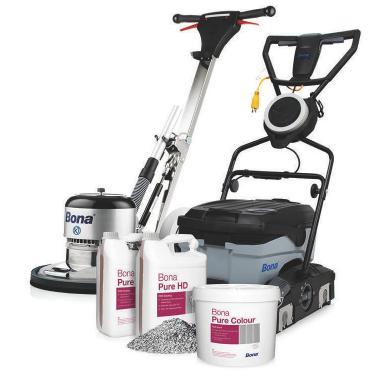
The new i-walk from i-team Global transforms the existing i-mop XL into a cobotic machine that cleans areas up to 300 square metres with one minute of set-up time, the firm says.
The i-walk’s automated driving system allows it to cover 700 square metres per hour, reducing the manual workload for cleaning staff and decreasing overall set-up and cleaning time. It can operate for up to four
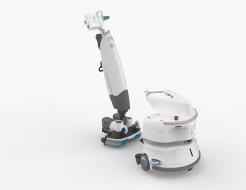
hours on a single battery charge.
The i-walk uses an advanced recovery system that reduces water usage by 70 per cent and reduces the amount of chemicals required. Its suction system
ensures floors dry quickly, reducing the risk of slips and falls. The machine is designed to alleviate repetitive, physically demanding tasks for operators.
www.i-teamglobal.com
EZshine’s Diamond Floor Pads are designed for daily floor maintenance and cleaning, using only water and eliminating the need for chemical-based cleaners. The latest versions are

embedded with precision diamond particles and incorporate Tough-Flex polycrystal diamond technology, said to enhance both durability and cleaning performance while minimising the number of passes required for effective cleaning. While the pads are positioned as a premium product, their long lifespan and the resulting reduction in replacement frequency offer potential long-term savings, says EZshine.
www.ezshinepad.com

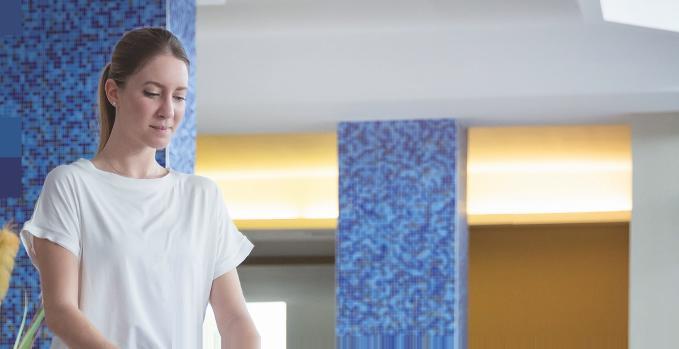
Fimap says its CB-1 autonomous scrubbing machine offers simple start-up and set-up procedures - giving the operator the power to set up, record and change cleaning paths autonomously, without mapping. The operator saves the cleaning settings to be repeated by the scrubber in a mission code. First, the code that will store the settings the operator is about to use, must be scanned. Then there are two ways to record the paths. If CB-1 is to follow a certain route exactly, Learn&Play is the best mode. With the Perimeter mode, just the boundary within which cleaning must be performed is recorded.
www.fimap.com
• Par le lancement de l’appareil i-walk, i-team Global a transformé son i-mop XL en un robot de nettoyage des sols.
• Les tampons de nettoyage des sols EZshine’s les plus récents sont diamantés avec précision pour assurer un nettoyage à l’eau seule.
• L’autolaveuse robotique CB-1 de Fimap permet à l’opérateur de configurer, enregistrer et modifier les parcours de nettoyage indépendamment
• Mit der Einführung des i-Walk verwandelt i-Team Global den i-Mop XL in einen Bodenreinigungscobot.
• Die neuesten Bodenpads von EZshine verfügen über eingebettete PräzisionsDiamantpartikel zur Reinigung mit nur Wasser.
• Die robotische Scheuersaugmaschine CB-1 von Fimap gibt dem Bediener die Möglichkeit, Reinigungswege unabhängig aufzuzeichnen und zu ändern.
• Con il lancio di i-walk, i-team Global sta trasformando l’i-mop XL in un cobot per la pulizia dei pavimenti.
• I più recenti cuscinetti per pavimenti di EZshine sono incorporati con particelle di diamante di precisione per la pulizia con la sola acqua.
• La lavasciuga robotizzata CB-1 di Fimap offre all’operatore la possibilità di impostare, registrare e modificare i percorsi di pulizia in modo indipendente.

Floor care and maintenance solutions specialist Bona has introduced its new Resilient Solution Colour Collection, focusing on colour psychology and its impact on interior spaces. The collection includes five colour groups and 15 natural tones, designed to work with Bona’s Resilient System, which is designed to restore and upgrade resilient floors.
Research indicates that selecting appropriate colours in office and interior spaces can positively affect occupants’ experiences and behaviours. As floors are one of the largest surfaces in a building, careful colour selection can influ-
ence the overall atmosphere.
To assist in the colour selection process, Bona has updated its Floor Visualiser tool. This tool allows users to upload a photo of a room and experiment with different colour and chip combinations, simplifying decision-making. www.bona.com
The BD 50/55 C Classic Bp Pack from Kärcher is a compact walkbehind scrubber dryer available with or without traction drive. Even without a drive system, it is easy to manoeuvre and features a robust chassis, with durable components such as an aluminium brush head and scrubbing deck.
Powered by a zero-maintenance 115 Ah AGM battery, the machine can operate for up to three-and-a-half hours, delivering a contact pressure of 27 kg. Its simple control panel uses colour coding, with key functions like the on/off button highlight-
ed in yellow for easy operation. The machine’s design includes rear rollers, which assist with manoeuvrability on ramps and sloped surfaces.
www.karcher.com
The Nexaro NR 1500 is a fully autonomous robot vacuum cleaner boasting compact design, patented D-shape, and ease of use.
Nexaro HUB software manages all aspects of operation - coordination, control and documentation - whether used individually or as part of a fleet. The Hospitality Solution is designed for use in the hotel and care sectors, with the Nexaro Trolley capable of transporting and charging up to four vacuum robots. The Drop & Go function allows the robot to operate without the need for a docking station, internet connection or pre-mapped premises.
www.nexaro.com
• Bona a présenté sa collection Resilient Solution Color, axée sur la psychologie des couleurs et son impact sur les espaces intérieurs.
• La nouvelle BD 50/55 C Classic Bp Pack est une autolaveuse compacte, peu onéreuse et très maniable.
• Le Nexaro NR 1500 est un robot aspirateur entièrement autonome au design compact et facile à utiliser.
• Bona hat seine Resilient Solution Color Collection vorgestellt, die sich auf die Farbpsychologie und ihre Auswirkungen auf Innenräume konzentriert.
• Die neue, kompakte Scheuersaugmaschine BD 50/55 C Classic BP Pack von Kärcher ist erschwinglich und bietet einfache Manövrierbarkeit.
• Der Nexaro NR 1500 ist ein völlig autonomer Roboterstaubsauger, der sich durch kompaktes Design und einfache Bedienung auszeichnet.
• Bona ha presentato la sua Resilient Solution Color Collection, concentrandosi sulla psicologia del colore e sul suo impatto sugli spazi interni.
• La nuova BD 50/55 C Classic Bp Pack è una lavasciuga pavimenti compatta ed economica che vanta un’agevole manovrabilità.
• Il Nexaro NR 1500 è un robot aspirapolvere completamente autonomo che vanta un design compatto e facilità d’uso.





















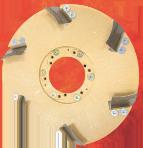













THERE HAS BEEN AN increasing trend for manufacturers to incorporate products such as wheat straw, bamboo and sugar cane into their products for environmental reasons. But are such moves truly sustainable? What impact do these products have on performance - and what exactly is a “natural” product anyway?
Ecolab integrates natural ingredients into its cleaning solutions wherever it makes sense, says global and corporate accounts manager Anika Dreessen. “However, it is important to look behind the scenes to truly evaluate the sustainability of these offerings,” she said. “While natural products are often perceived as being more sustainable, many chemicals are also formulated from natural ingredients. So the sustainability of a product will depend on factors such as sourcing, production and overall impact.”
Dreessen argues palm oil is a natural ingredient, but is not always the most sustainable solution. “It is crucial to pay close attention to the conditions under which an ingredient is sourced or produced,” she said. “Ecolab does not directly purchase palm oil or palm oil derivatives, and any of our suppliers providing palm-derived material needs to be members of Round Table on Sustainable Palm Oil to ensure sustainable and responsible sourcing.”
Incorporating natural products into cleaning solutions yields multiple environmental advantages, she says. “For example, such products tend to be biodegradable and exhibit lower levels of toxicity than synthetic alternatives. Our cleaning solutions leverage both natural and synthetic ingredients to achieve optimal performance and sustainability.”
Sourcing raw materials from abroad can lead to a higher carbon footprint. “It is therefore important to consider the entire life cycle of a product to accurately assess its environmental impact,” Dreessen adds.
Salveco offers 100 per cent plant-based solutions containing molecules from various natural products says marketing manager Elvire Mathieu. “The key ingredi-
ent in our patented disinfectants is lactic acid which comes from agricultural crops. And the surfactants we use in our cleaning products are derived from wheat starch, corn starch, sugar beet or from the natural by-products of transformation processes.”
He says the company’s bio-based ingredients have a lower toxicity than most petrochemical molecules. “Our plantbased ingredients have a high ultimate biodegradability - up to 100 per cent in less than 28 days – and this reduces their end-of-life environmental impact,” he said.
The company sources plant-based ingredients from waste or by-products to create a circular bioeconomy, he says. According to Mathieu, Salveco evaluates every stage of a product’s development in terms of its sustainability. He believes the origin of ingredients always needs to be considered, however. “When natural ingredients are sourced from other countries, parameters such as the type of transport used, the conditions under which the resources are grown and the impact on local diversity need to be taken into account,” he said. “Local production means biobased products can be integrated directly into a circular process.”
At least 95 per cent of the ingredients used in Kärcher’s Natural detergent range come from nature, according to the company’s corporate communications manager Julie Gorjup. “The surfactants in our Natural Products are derived from food production waste including grain, sugar beet, rapeseed and other renewable materials,” she said.
“We focus on the use of bio-based raw materials and avoid using petrochemicals known to damage the environment. In some products we also refrain from using additives such as dyes and perfumes that don’t contribute to performance.”
Sodexo uses plant-based, enzymatic cleaning products in place of chemicals where possible says UK and Ireland head of cleaning Kevin Muckle. “These products are non-toxic to the environment and aquatic life while also significantly
What are the pros and cons of using so-called “natural” materials in cleaning and hygiene products? Ann Laffeaty asks industry players their opinions.
enhancing the health and safety of users and protecting them from chemical residue,” he said. “And they often come in concentrated solutions which reduces the amount of product required.”
However, just because a product is natural does not necessarily mean it has a lower carbon footprint, he adds. “This is particularly the case if it is made in another country. Factors such as transport, the amount of energy used in production and harvesting practices will all have an impact on carbon footprint.”
The surfactants used in Greenspeed’s liquid products are derived from renewable sources such as glucose and rapeseed oil, says the company’s sustainability manager Lies Marijnissen. “These are nontoxic and fully biodegradable and allow us to significantly reduce our CO2 emissions and lessen our reliance on limited petrobased resources,” she said.
It is a common perception natural products are inherently more sustainable than chemicals, according to Marijnissen. “The sustainability of a product will depend on various factors including how it is sourced, processed and used. And the real question is how each product fits into a life cycle analysis which looks at total environmental impact from production to disposal.”
Almost all products used by Cleanology are chemical-free says CEO Dominic Ponniah. “We introduced portion-controlled biological cleaning sachets and we sell bamboo-based toilet rolls and hand towels to customers,” he said.
Ponniah agrees with other commentators that it is important to assess the full life cycle of a product in order to calculate its sustainability. “A natural product sourced from another country could po-
Going the natural route (continued from page 25)
tentially be less sustainable, but since such products are usually shipped by sea their carbon footprint remains very low.”
Essity has switched to using 94 per cent natural ingredients in its Tork cosmetic foam and liquid soaps, says sustainability communications director Renee Remijnse. “This means they are now fully biodegradable and have a lower impact on aquatic life,” she said.
Essity uses wheat straw - the stalks left over after grain has been harvested from wheat - in some of its consumer and professional hygiene products. By-products from the production of pulp from wheat straw may be used for fertiliser and soil enhancement, according to Remijnse.
She agrees the use of natural ingredients does not automatically reduce a product’s environmental impact. “Natural products can still be harmful to the planet, so any benefits should be verified by EU-
Les fabricants font de plus en plus appel à des matières naturelles, telles que de la paille de froment, de bambou et de la canne à sucre dans leurs produits d’hygiène, tandis que d’autres recourent à des bouteilles en PET pour fabriquer de nouveaux produits. Quels sont les avantages et inconvéients de cette approche en termes de performance, logistique et prix ?
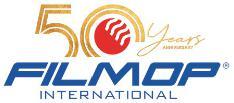
Ecolabel, FSC or other certified third-party standards,” she said. “It is also important to calculate any impacts claimed on carbon reductions with a Life Cycle Assessment.”
Bamboo is an example of a natural product that needs scrutiny when used in “sustainable” products. “Bamboo often comes from plantations that do not have a FSC biodiversity certification, whereas many forests have been certified and responsibly grown for many years,” she said.
So, are there any downsides to using natural ingredients in cleaning solutions? Chemicals sometimes perform better and have fewer environmental impacts than directly-harvested natural products, says Greenspeed’s Lies Marijnissen. “For instance, our research shows bamboo is not an ideal option for microfibre cloths because bamboo-based products often have a shorter lifespan, which negates their CO2 savings,” she said.”
Manche Hersteller verwenden in zunehmendem Maße natürliche Materialien wie Weizenstroh, Bambus und Zuckerrohr in ihren Hygieneprodukten, während andere Hersteller wiederverwertbare Gegenstände wie PETFlaschen zur Herstellung neuer Produkte verwenden. Was sind die Vor- und Nachteile solcher Maßnahmen in Bezug auf Leistung, Logistik und Preis?
Natural and plant-based raw materials are often subject to greater fluctuations in quality than those produced synthetically under stable conditions, says Ecolab’s Anika Dreessen. While Sodexo’s Kevin Muckle feels some products made from plant-based ingredients can be less effective than their chemical-based counterparts. “But this can be overcome by using chemicals to remove contaminants to start with. Once this has been done the use of natural products will be sufficient.”
Essity’s Renee Remijnse believes today’s natural-based products are just as good as their chemical equivalents. Salveco’s Elvire Mathieu also feels natural products have no downsides. Kärcher’s Julie Gorjup concurs: “Customers don’t need to compromise on performance when choosing natural-based products: our target is always to avoid any performance trade-off.”
I produttori utilizzano sempre più materiali naturali come paglia di grano, bambù e canna da zucchero nei loro prodotti per l’igiene, mentre altri utilizzano articoli riciclati come bottiglie in PET per realizzare nuovi prodotti. Quali sono i pro e i contro di tali mosse in termini di prestazioni, logistica e prezzo?



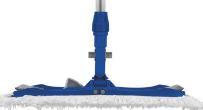




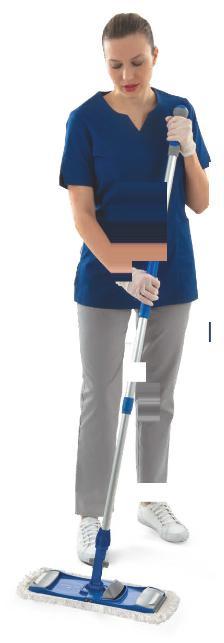





The hygiene paper of the future, made from cardboard. 100% recycled. Innovatively beige. Convincingly soft. And honored with the highest awards.


































In the category: “Sustainability – Best Practice (Manufacturing)”

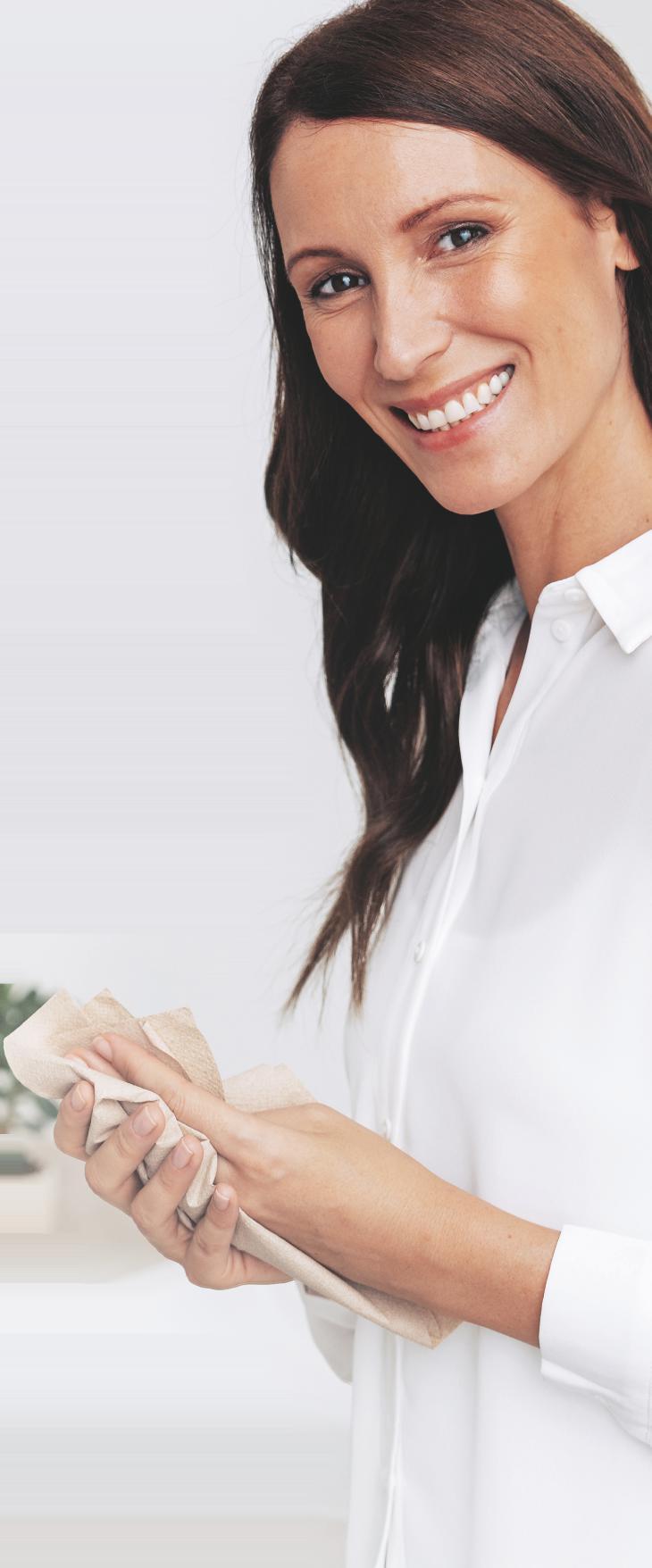
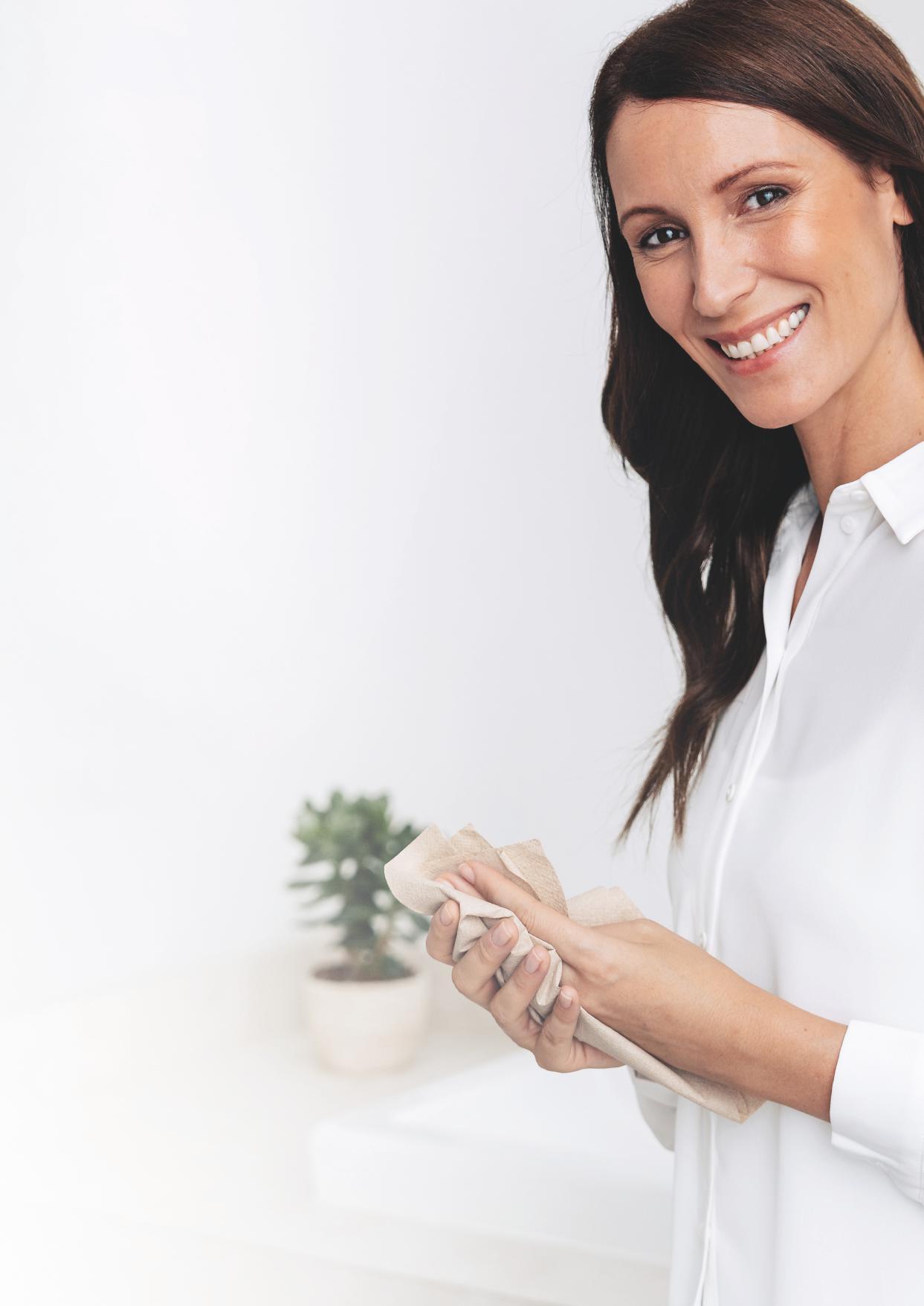
• La gamme des chariots Magic de TTS comprend des chariots écolabellisés UE et certifiés PSV.
• LESSEAU est une technologie de distribution sans contact et de lavage des mains solide.
• Le dispositif ECOsystem breveté installé sur les machines Eureka pour le nettoyage de planchers permet l’emploi multiple d’une même solution de nettoyage.
• Die Produktreihe Magic mit Reinigungswagen von TTS umfasst mit dem EU-Umweltzeichen zertifizierte Reinigungswagen, die auch PSV-zertifiziert sind.
• LESSEAU ist eine berührungslose Spender- und solide Handwaschtechnologie.
• Das patentierte ECOsystem, mit denen die Bodenreinigungsmaschinen von Eureka ausgestattet sind, ermöglicht die mehrfache Wiederverwendung derselben Reinigungslösung.
• La gamma di carrelli Magic della TTS include carrelli certificati EU Ecolabel che sono anche certificati PSV.
• LESSEAU è una tecnologia di erogazione senza contatto e solida per il lavaggio delle mani.
• L’ECOsistema brevettato sulle macchine lavapavimenti Eureka consente di riutilizzare più volte la stessa soluzione detergente.
Many components used in the carbon-neutral Magic trolleys from TTS are made from recycled plastic certified by Plastic Second Life, which cuts CO2 emissions during production.
The Magic range includes five trolleys certified with the EU Ecolabel - these trolleys are made from at least 30 per cent recycled plastic and are free from metals harmful to human health and ecosystems.
TTS is also certified with the Carbon Footprint Systematic Approach which allows it to calculate CO2 emissions for the life cycle of over 500 trolley models. www.ttsystem.com


LESSEAU, a touchless dispensing and solid hand wash technology developed through a partnership between Diversey (a Solenis company) and Slimstones, won the Amsterdam Innovation Award in the Sustainability & Environment category at Interclean earlier this year, as well as the Overall Winner award. The systems’s hand wash bars contain 95 per cent less water compared to traditional liquid soap and are smaller, lighter and packaged without plastic.
The system also aims to reduce plastic waste - LESSEAU’s dispenser is designed to enhance the user experience while preserving natural resources. diversey.click/diversey-lesseau
Eureka’s patented ECOsystem for scrubber dryers enables the re-use of cleaning solution by filtering out dirt, allowing the detergent to retain its cleaning effectiveness after multiple uses. This system reduces overall water and detergent consumption to a fifth, without reducing the quantity delivered to the brushes.

The ECOsystem is designed with long-term sustainability in mind, using high-quality components to ensure the machines remain productive for many years. This approach lowers maintenance costs, reduces the need for early replacement of parts, and minimises waste disposal www.eurekasweepers.com


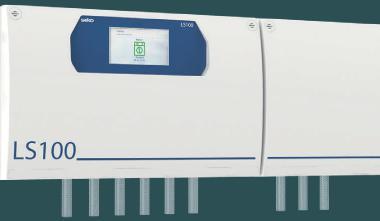

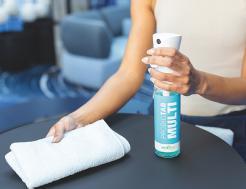
Greenspeed is hailing the start of a Tabolution, a waste-free cleaning approach aimed at reducing single-use plastic and environmental impact. This constitutes small probiotic tablets in plastic-free packaging. The tabs are designed to be dissolved in refillable bottles with tap water - reducing waste, transport emissions and storage space.
The biodegradable, plantbased ingredients in the tablets - including probiotics - continue to work after cleaning and are safer for users and the environment compared to traditional chemical cleaners. Products

include Probio Tab Multi for general cleaning and Probio Tab San for sanitary areas. Greenspeed has also introduced Fizzy Flo, an eco-friendly hand soap alternative, with plans to release Fizzy Flush, a multifunctional toilet cleaning tablet, soon. www.greenspeed.eu
The production of Filmop’s microfibre range incorporates solar energy, thanks to the photovoltaic systems installed at the company’s headquarters. Since 2011, these systems have significantly reduced CO2 emissions. The durability of the microfibres, made from high-quality materials, extends their lifespan says the company - helping to minimise resource use in production and disposal. Filmop’s claims microfibres are more resistant to washing than those made from natural yarns, with the fibres remaining intact even during machine washing.


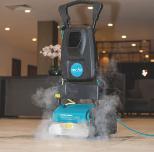


And independent laboratory tests have confirmed they release minimal microplastics. www.filmop.com
DiBO has launched three new battery-powered high-pressure cleaners. The new models— CPU-SB open, ECN-MB, and ECN-MB skid are cold water machines featuring quiet electric motors. They operate with two lithium batteries, allowing for flexible use without reliance on external power grids. Users can choose between two cleaning modes: Eco mode offers one hour of operation, while Turbo mode provides about 30 minutes. The batteries are interchangeable and can be fully charged in 90 minutes, with two fast chargers included as standard.
An automatic start/stop system improves energy efficiency by conserving battery life. www.dibo.com
• Les Probio Tabs de Greenspeed sont des pastilles de nettoyage probiotiques à base d’ingrédients végétaux et de probiotiques.
• Pour produire ses tissus en microfibre, Filmop recourt à l’énergie électrique produite par les panneaux solaires installés à son siège.
• DiBO a lancé trois nouveaux nettoyeurs haute pression dotés de moteurs silencieux.
• Die Probio Tabs von Greenspeed sind probiotische Reinigungstabletten, die auf pflanzlichen Inhaltsstoffen und Probiotika basieren.
• Bei der Herstellung seiner Mikrofasern nutzt Filmop Solarenergie aus den Photovoltaikanlagen an seinem Hauptsitz.
• DiBO hat drei neue Hochdruckreiniger mit leisen Motoren auf den Markt gebracht.
• Probio Tabs della Greenspeed sono tavolette detergenti probiotiche alimentate da ingredienti a base vegetale e probiotici.
• Nella produzione delle sue microfibre Filmop utilizza l’energia solare proveniente dagli impianti fotovoltaici della propria sede.
• DiBO ha lanciato tre nuove idropulitrici con motori silenziosi.
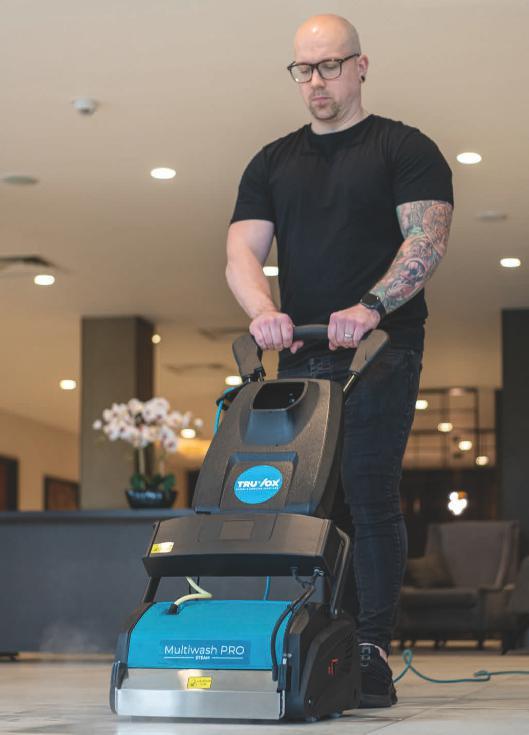


Meet the Nilfisk SC550, an efficient walk-behind scrubber dryer built to keep your business moving.
It is easy to use, and its simple and intuitive maintenance ensures optimized performance and reduced downtime. Furthermore, the SC550 is designed to accommodate the use of recycled materials and to use water, power, and detergent efficiently. ter, power, and efficiently



Based on internal studies, the SC550 is up to 27% more energy efficient than previous models and uses as much as 40% less water and 60% less detergent than machines without similar technology.
The SC550 adapts to the user’s size, language, and skills, reducing strain, increasing comfort, and optimizing cleaning performance.
The Nilfisk SC550 is available from November.
Scan for a cleaner future








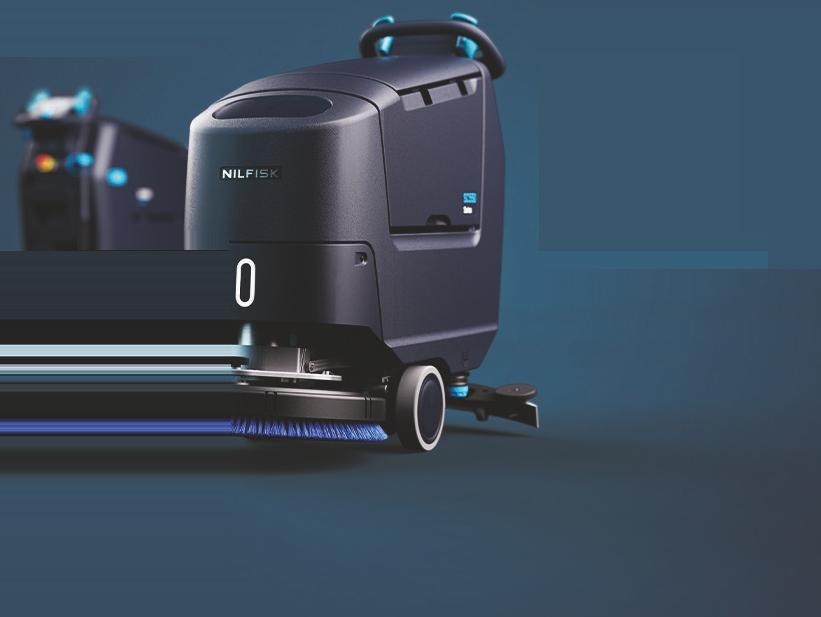



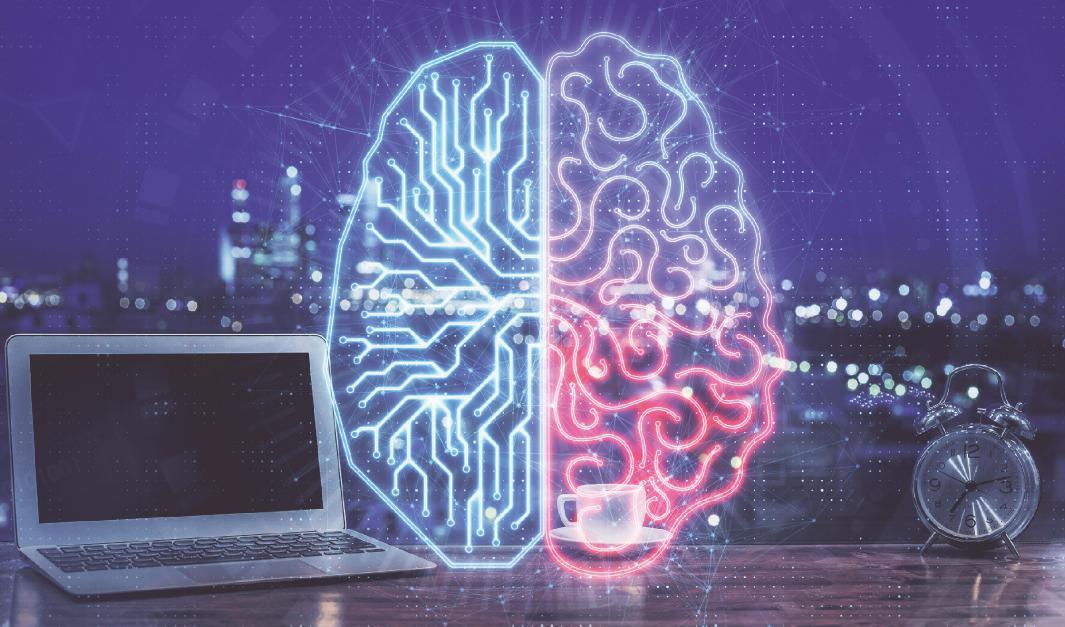
The world’s first major Act to regulate artificial intelligence passed into law across the European Union in August. It aims to ensure the technology is safe and respects the bloc’s “fundamental rights and values”. Hartley Milner explores how the legislation will impact businesses.
“AS THE MEMORY of past misfortunes pressed upon me, I began to reflect upon their cause … the monster whom I had created, the miserable daemon whom I had sent abroad into the world.”
Could Victor Frankenstein’s remorseful words turn out to be frighteningly prescient as we lurch towards an uncertain future under artificial intelligence? Will science fiction morph inexorably into science fact? Has humanity unleashed a monster that will eventually turn on its creator?
The meteoric rise of AI has sparked countless dystopian scenarios amid deep concerns that the race to develop evermore advanced systems is out of control. Even many of the biggest names in tech remain fearful. In an open letter, the likes of billionaire mogul Elon Musk and Apple co-founder Steve Wozniak called for a pause in the development of
the most advanced AI models to allow time to make sure they are safe.
“AI systems with human-competitive intelligence can pose profound risks to society and humanity,” the 1,000-plus signees warned. “Powerful AI systems should be developed only once we are confident their effects will be positive and their risks will be manageable.” The letter was prompted by the release of GPT-4 from Microsoft-backed OpenAI, whose founder, Sam Altman, suggested himself that “at some point it may be important to get an independent review before starting to train future systems”.
The potential dangers of AI are causing unease more widely across the business community as well, and inhibiting its uptake. A poll of Irish business leaders this summer found that 91 per cent believed GenAI would increase security risks in the year ahead, with 53 per cent fearing catastrophic cyber attacks. Almost three quarters thought the creative content tool would “fail to enhance” their company’s ability to build trust with shareholders over the same period.
Other concerns included legal liability and reputational risks, the
spread of misinformation, bias towards specific groups of customers or employees and challenges assessing AI investment returns.
Most critically, less than three out of 10 respondents were confident their organisation’s current measures to control GenAI lent themselves to “safe and secure outcomes”. However, three quarters reported having plans to put GenAI governance structures in place, up from 56 per cent last year. And 84 per cent welcomed the EU Act and other regulations, acknowledging legislation was necessary to counter the negative impacts of AI.
“Good governance grounded in an organisation’s risk appetite provides clarity and a safe environment for a business to innovate and explore AI uses,” said Martin Duffy, head of GenAI at accounting firm PwC Ireland, which commissioned the survey. “The business can then focus on faster adoption of AI without exposing itself to unnecessary or unforeseen risks.”
The European Union’s trailblazing Act brings in sweeping implications for companies operating both inside and
artificial intelligence
outside the EU that design, develop, deploy or use intelligent technologies or plan to do so in the future. AI systems are targeted for their potential to cause harm to society using a risk-based approach, specifically the higher the risk the stricter the regulation. Risk categories with implications for businesses are:
Unacceptable risk – AI systems considered a threat to the fundamental rights of people. Banned outright are models used to manipulate human behaviour to circumnavigate free will or exploit vulnerabilities. These include ‘social scoring’ – classifying individuals based on their social behaviours or personal characteristics – by governments, police agencies, the judiciary and businesses, as well as some uses of biometrics such as emotion recognition models in workplaces to pigeonhole people and identification applications like facial recognition.
High risk – systems used in critical sectors such as healthcare, education, law enforcement, the courts or public administration. Other areas include recruitment, employee rating and credit scoring, automated insurance claim processing or the setting of risk premiums for customers. These models will have to comply with strict standards around data quality, transparency, human oversight, accuracy, robustness and security. So-called regulatory ‘sandboxes’ – safe spaces for businesses to test new innovations – will promote the development of fully compliant systems, including those used for hiring or to assess whether somebody is entitled to a loan or operate autonomous robots.
Innovation boost
In addition to sandboxes, startups and small to medium-sized tech firms will be able to draw on €4bn in EU funding set aside to boost innovation and the development and training of compliant AI models. Businesses of all sizes making the transition to technologies such as AI can get expert support via a network of digital innovation hubs being rolled out across member states, as well as Schengen area countries Iceland, Lichtenstein and Norway. These ‘one-stop shops’ offer personalised training programmes, workshops and mentorship, as well as
Le premier texte législatif visant à réglementer l’intelligence artificielle a été adopté en août par l’Union européenne. Son but est de veiller à la sécurité de l’IA et à ce que celle-ci respecte les droits et les valeurs fondamentales de l’UE. Hartley Milner explore les effets possibles de cette législation sur la vie des affaires.
access to technical expertise and cuttingedge digital tools that can be trialled before being fully implemented.
Limited risk – those arising from a lack of transparency in AI usage. The EU Act contains targeted measures to reassure users and promote trust. For instance, people must be made aware they are interacting with systems like chatbots so they can make an informed decision whether to continue. Tech providers also have to ensure AI-generated content is identifiable and legal and text published to inform on matters of public interest is clearly flagged as artificially created. This also applies to images, audio and video content that can be created or manipulated to cause harm (‘deepfakes’).
Minimal risk – AI applications posing little or no threat to citizens’ rights or safety. Applications such as spam filters and video games can be deployed without strict regulatory requirements, allowing for their easier access to markets. The vast majority of AI systems currently used in the European Union fall into this category.
The bulk of AI legislation will be enforceable from August 2 2026. However, the ban on systems that present an unacceptable risk will apply six months from when the Act came into law (August 1), while the rules for so-called general-purpose AI models will apply after 12 months. To bridge the period before full implementation, the European Commission has launched an AI pact, an initiative inviting AI developers to adopt key obligations ahead of legally binding deadlines. The Commission is now working on guidelines for how the Act should be implemented along with a set of standards and codes of practice.
The onus will be on AI system providers and deployers to have ongoing monitoring regimes in place, and to report serious incidents or malfunctions with the technology. EU member states have until August 2 next year to appoint watchdogs to enforce compliance with the legislation and carry out market surveillance activities. Breaches of the rules can result in hefty fines of up to seven per cent of a company’s global annual turnover.
“AI has the potential to change the way we work and live and promises enormous benefits for citizens, our society and
Das weltweit erste große Gesetz zur Regulierung künstlicher Intelligenz ist im August in der gesamten Europäischen Union in Kraft getreten. Es soll sicherstellen, dass die Technologie sicher ist und die „Grundrechte und Werte“ des Blocks respektiert werden. Hartley Milner untersucht, wie sich die Gesetzgebung auf Unternehmen auswirken wird.
the European economy,” said Margrethe Vestager, vice-president responsible for adapting Europe to the digital age. “The European approach to technology puts people first and ensures everyone’s rights are preserved. With the AI Act, the EU has taken an important step to ensuring AI technology uptake respects EU rules in Europe.”
Dragos Tudorache, a Romanian lawmaker who oversaw EU negotiations to agree a legal framework for the Act, welcomed the deal, but told ECJ that the biggest hurdle remains its implementation.
Humans in control
“The AI Act has pushed the development of AI in a direction where humans are in control of the technology and where the technology will help us leverage new discoveries for economic growth, societal progress and unlock human potential,” Tudorache said. “But the AI Act is not the end of the journey, rather the starting point for a new model of governance built around technology. We must now focus our political energy on turning it from the law in the books to reality on the ground.”
Others feel more conflicted about the legislation. “This decision has a bittersweet taste,” said Marianne Tordeux Bitker, director of public affairs at startup and investor association France Digitale. “While the AI Act responds to a major challenge in terms of transparency and ethics, it nonetheless creates significant obligations for all companies that use or develop artificial intelligence, despite a few adjustments planned for start-ups and SMEs, notably through regulatory sandboxes.
“We fear the text will simply create additional regulatory barriers that will benefit American and Chinese competition and reduce our opportunities to develop European champions in AI.”
While giving the EU credit for its global leadership on AI mitigation, Max von Thun, Europe director of non-profit organisation the Open Markets Institute, said: “The AI Act is incapable of addressing the number one threat AI currently poses: its role in increasing and entrenching the extreme power a few dominant tech firms already have in our personal lives, our economies and democracies.”
La prima grande legge al mondo per regolamentare l’intelligenza artificiale è diventata legge in tutta l’Unione europea ad agosto. L’obiettivo è garantire che la tecnologia sia sicura e rispetti i “diritti e valori fondamentali” del blocco. Hartley Milner esplora l’impatto della legislazione sulle imprese.


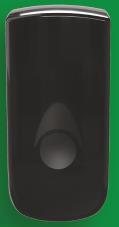


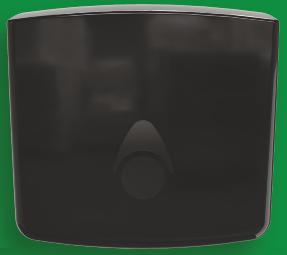

Champion eco-friendliness with recycled plastic and our sustainable range

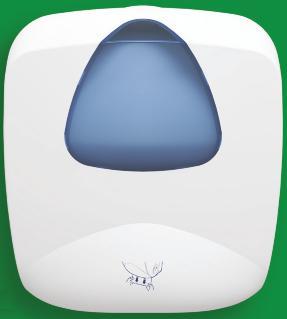





Ann Laffeaty asks companies what they consider to be the chief function of an air freshening system in public environments and finds out what makes fragrancing such a crucial part of the cleaning and hygiene industry.
The purpose of a fragrance will vary according to the type of facility and the customer’s particular needs, she said. “Facilities should look for products that contain malodour neutralisers to help eliminate bad odours from the outset,” said Schwartz. “They should then choose a fragrance that meets their goalswhether this is to reinforce the cleanliness standards of the facility or to influence customers’ buying behaviour.”
MOST OF US VISIT public spaces several times a week – even every day – whether these are offices, restaurants, pubs, hotels or shopping centres. And these outings may well incorporate a visit to the washroom. We will barely notice the aroma of the environments we visit unless they happen to smell particularly unpleasant. But an air freshener system of some kind is likely to be in operation at most of these public spaces.
Why, though? What is the main role of an air freshening system? Is it simply to create a good impression on the part of the visitor, whether conscious or subliminal? Is it important to convince people that a particular environment is clean? Or maybe there is a more cynical reason for using a certain fragrance: perhaps it has been developed to persuade customers to part with their money, for example?
The role of an air freshening system will depend on the type of venue in question, says Vectair’s vice-president of marketing Chelsey Schwartz. “Ultimately it is all about reinforcing the ambience the facility is trying to create and making a positive first impression on the visitor,” she said.
However, she adds a fragrance can have other functions as well. “It can truly influence the mood of a visitor whether it makes them calm and relaxed or whether it leads to them feeling energetic and excited,” she said. “Choosing a fragrance and delivery system that aligns with a company’s business goals can have really impactful results.”
Citrus scents have long been traditionally used in washroom facilities but Schwartz says Vectair has noticed a change in this trend. “Higher-end fragrances are making their way into the washroom as facilities look to differentiate themselves from the more traditional scents,” she said. “The right fragrancewhen paired with other higher-end washroom features - can become a finishing touch in creating an upmarket experience.”
She says the choice of system will play a significant role in its effectiveness, depending on the environment. “Factors to consider when choosing a delivery system will include how customised you want the experience to be,” she said. “There are products that provide a high level of flexibility in terms of programming and fragrance intensity, as well as battery-free passive systems that offer a consistent release of fragrance over a 30-day period.”
The main function of an air freshener will depend on whether it has been designed as a ‘scent marketing’ fragrance or as a deodorising one for masking unpleasant odours, says Hyprom’s marketing and communications director Dorothee Dinner.
“In the first case, the main objective will be to create an olfactory ambience that puts the customer in a positive mood with the hope that this will lead to a prolonged visit and a purchase,” she said. “In the second case, the aim will be to inspire confidence. For example, a deodorised washroom will conjure up an impression of cleanliness for the user.”
The right fragrance will help to influ-
ence the customer’s purchasing decisions, according to Dinner. “This trick is as old as the hills,” she said. “A pleasant smell in a bar, spa or even a retail store will make you want to stay and spend money.
“When we are in the mood to buy, our olfactory sense will be awakened almost in spite of ourselves. We might become aware of the smell of good leather when buying a bag or a pair of shoes, for instance, or we might perceive fresh garden scents when purchasing fruit and vegetables. And bakeries may well order fresh croissant aromas from olfactory marketing companies.”
Hyprom offers fresh, fruity fragrances such as citrus for masking malodours. “However, the composition of the scent will be more complex and closer to a skin perfume when creating a pleasant atmosphere,” she said. “As for diffusion, the choice of system will depend on the size of the room and the air flow.”
When it comes to masking a bad smell or creating a pleasant ambience, the fragrance formulation required will be highly specific, she says. “This is more important than the method of diffusion,” said Dinner.
Fragrance forms a key part of the customer’s washroom experience whether this is conscious or subconscious says Essity communications director Jenny Turner. “When visiting a public facility such as a shopping centre, stadium or restaurant, many customers will need to use the washroom while they are there,” she said. “Their experience will then form part of the impression they have of that business.”
In Essity’s 2024 Tork Insight Survey,, 64 per cent of the 6,000 respondents questioned said they felt air fresheners to be either very or extremely important in passenger terminal and sports stadium washrooms, said Turner. And this figure rose to 67 per cent when the respondents were asked about restaurants.







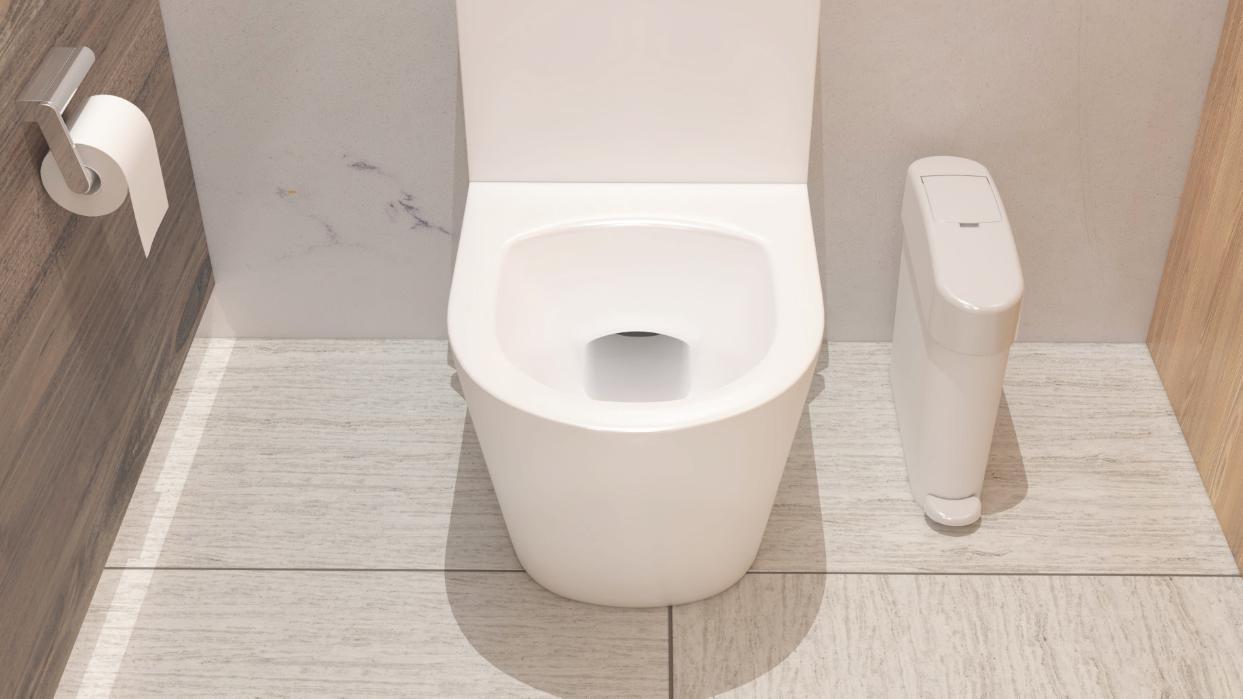



The 23L unit ensures sanitary waste is disposed of hygienically, safely and responsibly.
The modesty flap with Invizi-Touch® technology reduces the risk of crosscontamination and prevents bacterial buildup. Made in the UK


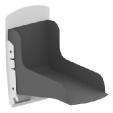


Why fragrance? (continued from page 36)
“Overall there was a clear preference for scented washrooms in our survey, with three out of four people preferring the presence of scent,” she said.
Bad washroom odours can have a negative impact on the reputation of a business and can lead to customer complaints, according to Turner. “However, many traditional air fresheners struggle to be effective due to their ‘spray and fade’ effect, which means the scent is overly intense when it is first sprayed and then quickly fades away,” she said. “A spray unit also needs to be placed high on the wall to deliver freshness to the whole washroom, and this is not ideal for dispenser checks and refilling.”
Prodifa’s commercial export manager Séverine Bossaert believes the chief function of an air freshener is to create a good impression on the visitor. “If the source of any unpleasant smells cannot be elimi-
Quel est le premier rôle d’un système de désodorisation? S’agit-il avant tout de faire une bonne impression sur le visiteur ? Ou vise-t-on à convaincre le visiteur que l’environnement dans lequel il baigne est entièrement salubre, ou encore, à le persuader à sortir son porte-monnaie?

nated, a fragrance diffusion system will be required to remove any doubts about the hygiene of the environment,” she said.
“In this type of situation it is not sufficient to simply mask the unwanted odours with a powerful perfume, as this will only last for a limited time before the smell breaks through. The key here is to use a device which encapsulates the undesirable olfactory molecules and then eliminates them once and for all.”
The choice of fragrance will depend on the environment and the objective, she says. “Citrus notes offer strong coverage and will be immediately identified as creating an impression of freshness and cleanliness,” said Bossaert. “But if the aim is to create a soothing or dynamic atmosphere or even an olfactory identity, it needs to be unique and specific to
Was ist die Hauptaufgabe eines Lufterfrischersystems? Soll vor allem ein guter Eindruck bei Besuchern hinterlassen werden? Oder ist es der Sinn eines Duftsystems, die Menschen davon zu überzeugen, dass die Umgebung sauber ist – oder sollen sie vielleicht sogar dazu bewegt werden, sich von ihrem Geld zu trennen?
that establishment.”
She says every public location will have different needs and requirements.
“The recommended fragrance must therefore be carefully studied to achieve the desired objective,” she said. “Similarly, the type of dispenser and the intensity of its programming will be determined by the type of establishment and the traffic it generates.”
The right fragrance will have a powerful influence on a visitor’s emotions at the point of sale, Bossaert believes. “It will differentiate the establishment and create an emotional bond with the customer while also generating positive emotions,” she said. “It can also act as a stimulus for impulse-buying and make the customer more inclined to explore the products and services on offer. And it will enhance the customer experience and reinforce brand image.”
Qual è il ruolo principale di un sistema di rinfrescamento dell’aria? Il suo scopo principale è creare una buona impressione sul visitatore? Oppure lo scopo di un sistema di profumazione è convincere le persone che un ambiente è pulito – o addirittura persuaderle a separarsi dai propri soldi?






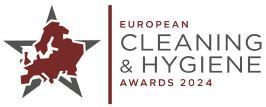
• L’assainisseur d’air Tork Constant proposé par Essity constitue un système de soin d’ambiance sans gaz propulseur neutralisant les odeurs en continu.
• Kennedy propose des assainisseurs d’air entièrement programmables, activés par mouvement de l’air, sans aérosols, et produits en trois finitions.
• JVD a introduit le SUP’Air Fresh, un sèche-mains à double action de nettoyage des mains et de neutralisation des odeurs.
• Le rafraîchisseur d’air et éliminateur d’odeurs OxygenSupreme Constant neutralise les odeurs et diffuse des fragrances en continu.
• Der Tork Kontinuierlicher Lufterfrischer von Essity ist ein Luftpflegesystem ohne Treibmittel, das Gerüche kontinuierlich neutralisiert.
• Kennedy bietet vollständig programmierbare Einheiten und Lufterfrischersysteme ohne Aerosol, die durch Luftbewegung aktiviert werden, in drei Ausführungen.
• Neu von JVD ist der SUP’Air Fresh, ein Händetrockner, der sowohl Hände trocknet als auch Gerüche neutralisiert.
• Oxygen-Supreme Kontinuierlicher Lufterfrischer & Geruchseliminierer bietet kontinuierliche Beduftung bei gleichzeitiger Eliminierung von Gerüchen.
• Il deodorante Tork Constant di Essity è un sistema di cura dell’aria privo di propellenti che neutralizza continuamente gli odori.
• Kennedy offre sistemi di rinfrescamento dell’aria senza aerosol completamente programmabili e attivati dal movimento dell’aria in tre finiture.
• La novità della JVD è SUP’Air Fresh, un asciugamani che oltre ad asciugare le mani neutralizza gli odori.
• Il deodorante per ambienti con controllo degli odori costante Oxygen-Supreme rilascia una fragranza continua e neutralizza gli odori.
Many traditional air fresheners are unable to deliver a constant fragrance due to their “spray and fade” effect, according to Tork manufacturer Essity.
And in order to be able to deliver freshness to the whole washroom they need to be placed high up on the wall –which presents challenges for cleaners when it comes to dispenser checks and refilling.
Essity claims to have solved these problems with its Tork Constant Air Freshener. This is a propellant-free aircare system designed to neutralise odours continuously and evenly.
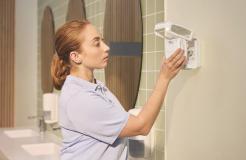
The system is said to be effective even when mounted on the wall at a reachable height for cleaners or beneath a sink.
The Tork Constant Air Freshener will operate for up to 90 days before requiring a refill, and it comes in a range of scents designed to eliminate bad odours while also creating a consistent, fresh scent www.tork.co.uk
Kennedy Hygiene offers fully programmable air freshening systems and air movement-activated non-aerosol dispensers, available in three finishes: white,

premium and recycled black. The systems are designed for efficient odour control in washrooms, with the ‘Freedom in fragrance’
range available in both aerosol and cartridge formats. Each fragrance is formulated with a dual-action neutralising agent.
The Airplus system, a doormounted solution for toilet cubicles, features easy servicing with simple refill loading and activation when the dispenser cover is closed.
The Spa air freshener is intended for large washrooms and other business areas such as receptions and offices. It provides flexible, programmable settings, allowing users to customise intervals and operational periods. Service features include clear programming options with a three-button keypad, an easyview LCD screen and software for straightforward control.
Complementing the Spa system are 12 available fragrances from the Kennedy Collection ‘Freedom in fragrance’.
The Spa is available in five Kennedy finishes, including the standard white and premium finishes, as well as the Black Obsidian which is made from recycled ABS plastic.
kennedy-hygiene.com
The SUP’AIR Fresh hand dryer from JVD is designed to address
odour issues in high-traffic washrooms. Utilising patented technology, the dryer neutralises volatile organic compounds (VOCs) responsible for unpleasant smells, providing round-theclock odour control without the need for synthetic fragrances or harmful chemicals. As an energy-efficient solution, it requires no consumables - which can help reduce costs associated with paper and energy use. It also minimises the need for frequent maintenance.
www.jvd.fr
The Oxygen-Supreme Constant Air Freshener & Odour Eliminator offers a system that delivers continuous fragrance while neutralising odours for periods of 30, 60, or 90 days. The device operates using patented Oxy-Gen Technology, which allows the product to release measured doses of fragrance and odour neutraliser at set intervals, maintaining consistency throughout the cartridge’s life.
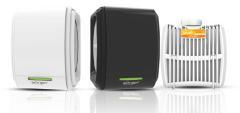
The cartridges contain Neutra-lox, an odour eliminator designed to tackle unpleasant smells such as urine and mould. Instead of merely covering these odours with strong fragrances, Neutra-lox works to neutralise them, without leaving overpowering scents.
www.oxygenpowered.com
